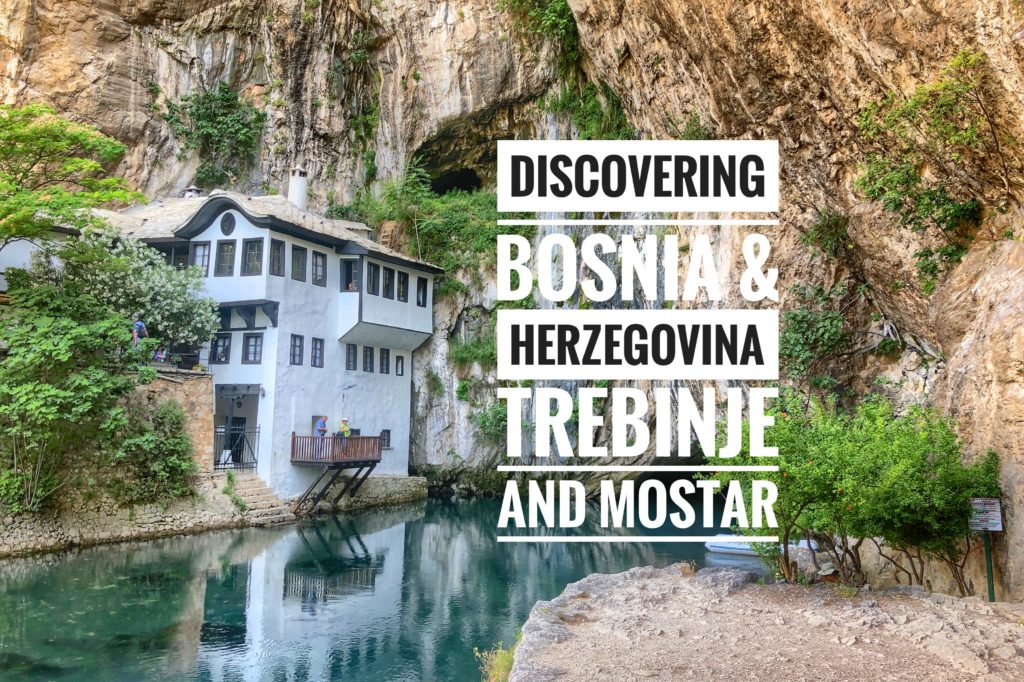
Entering parts of Bosnia & Herzegovina (we’ll call it B&H for short) is like being transported to a land far, far away from Europe…more Turkish, more Middle Eastern, and more exotic. It is one of the most fascinating, hidden wonder-filled, yet complex countries we’ve been to in Eastern Europe. In fact, to be honest, it’s a little overwhelming to even think about trying to briefly summarize the complexities in an understandable way. It’s a land where Catholics, Muslims, Jews, and Orthodox Christians have peacefully coexisted for centuries. In 1992 all that changed when people began focusing on differences rather than commonalities and the worst European war erupted since World War II.
That said, it’s a country that in 25 years has begun to rebuild itself into something better and stronger, and has floored us with its beauty, diversity, and potential. With tourists flocking to Croatia and Montenegro just next door, it’s incredible that more people aren’t making their way just a little further east to B&H, but we’ll happily take advantage of this oversight while we can.
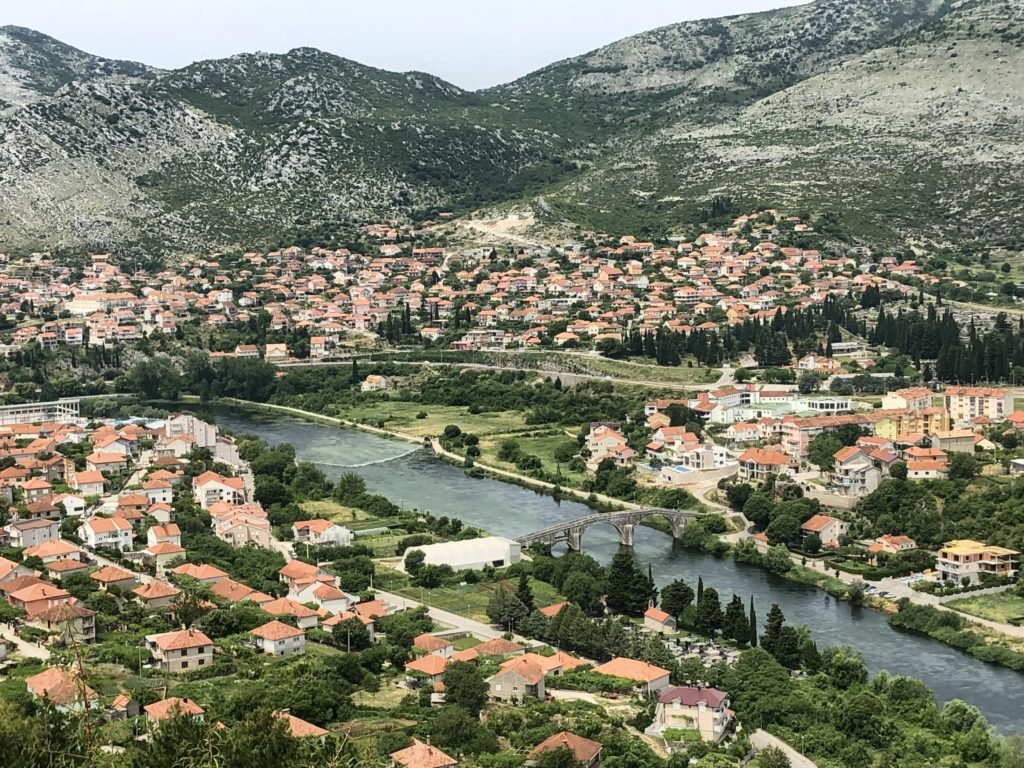
Trebinje
Our journey to B&H began with a 1.5 hour bus ride from Dubrovnik, Croatia. The border crossing went smoothly and we chugged along the windy mountain road into Trebinje. At the border we curiously passed a welcome to the Republic of Srpska sign, the first of many perplexities in this land. We later learned the Republic of Srpska is one of the two regional semi-autonomous political entities which compose B&H. A bit of a backstory… On 9 January 1992, the assembly proclaimed this area, largely in eastern B&H, the Republic of the Serb People of B&H. Thereby declaring it part of Yugoslavia, which was one of the political controversies which led to the Bosnian War. It was again recognized by B&H in December 1995 to help maintain peace after the war. Trebinje, while not a major tourism hub, is the kind of place you want to live. It’s quiet, it’s quaint, it’s loaded with red roof tops, it has the clearest river we’ve ever seen and everyone smiles. We like it here.
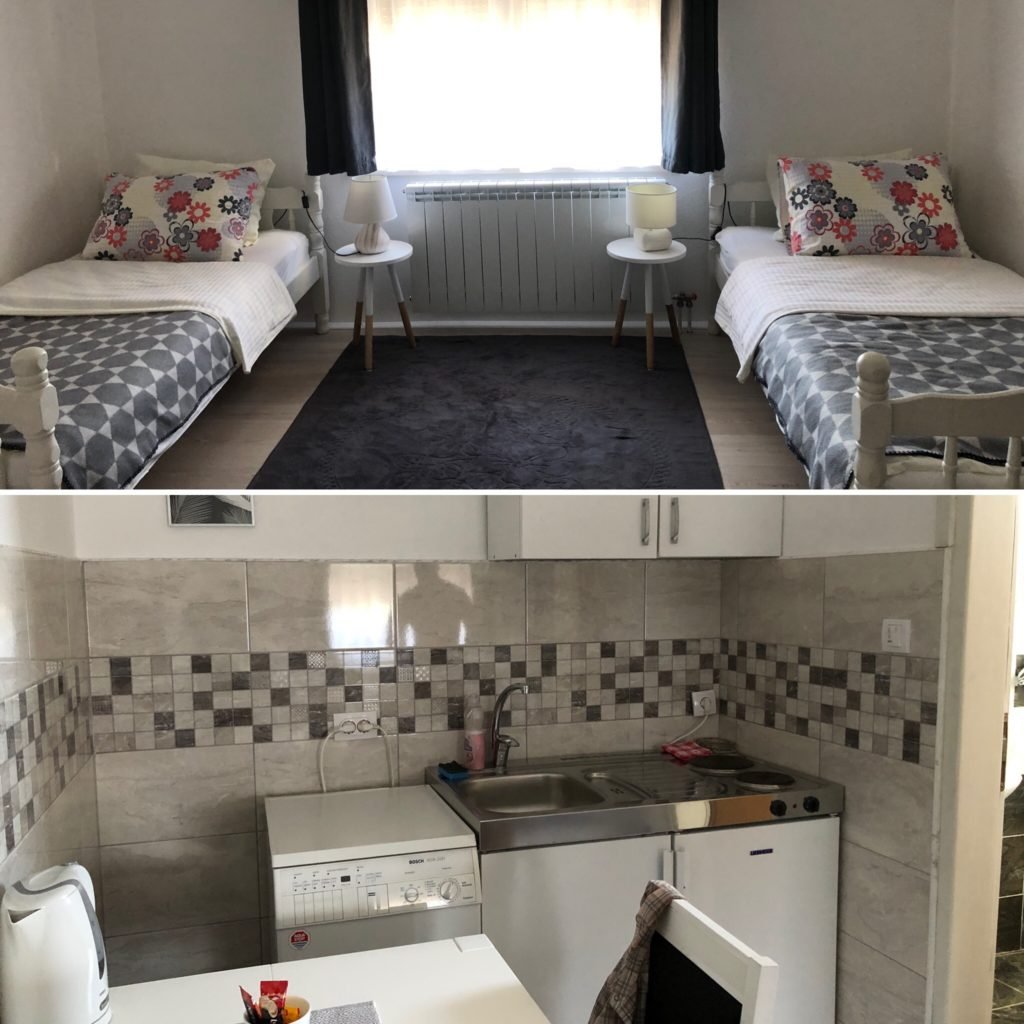
Our room for two nights in Trebinje was a cozy little studio with twins beds that were complete dream makers….so comfy. Best beds/pillows we’ve had in months believe it or not! Sometimes it’s the simplest pleasures when traveling long term. Mandy also got to experience the local hospitality when she got an assist from a couple of friendly neighbors (and a pair of pliers) when she broke a corkscrew off in a bottle of wine.
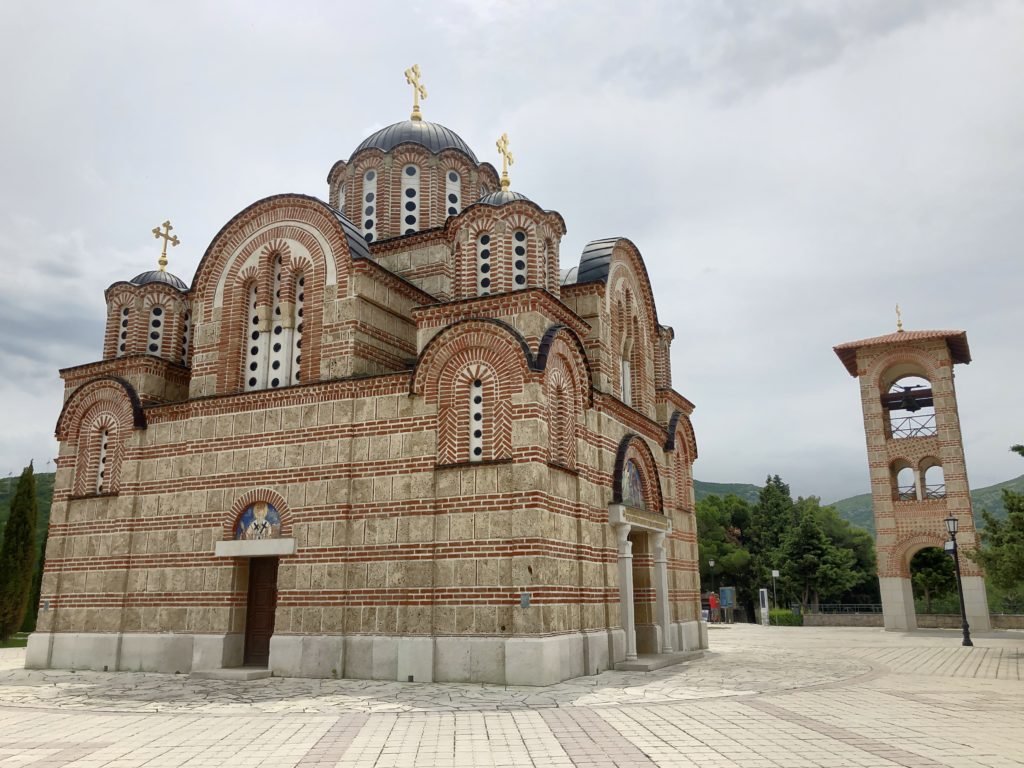
One of the prettiest views of the town can be found high on the hill from the Serbian Orthodox Monastery that rests on top, Hercegovačka Gračanica. It’s about a 45 minute walk from center, and it’s all uphill! It is said there are three varieties of Bosnians… Bosnian Serbs (37%), who are Orthodox, Bosnian Croats (14%), who are Catholic, and Bosniaks (48%), who are Muslim, although genetically they’re basically identical. However, this isn’t necessarily accurate because although the majority of them claim to be religious, few are strictly devoted in practice.
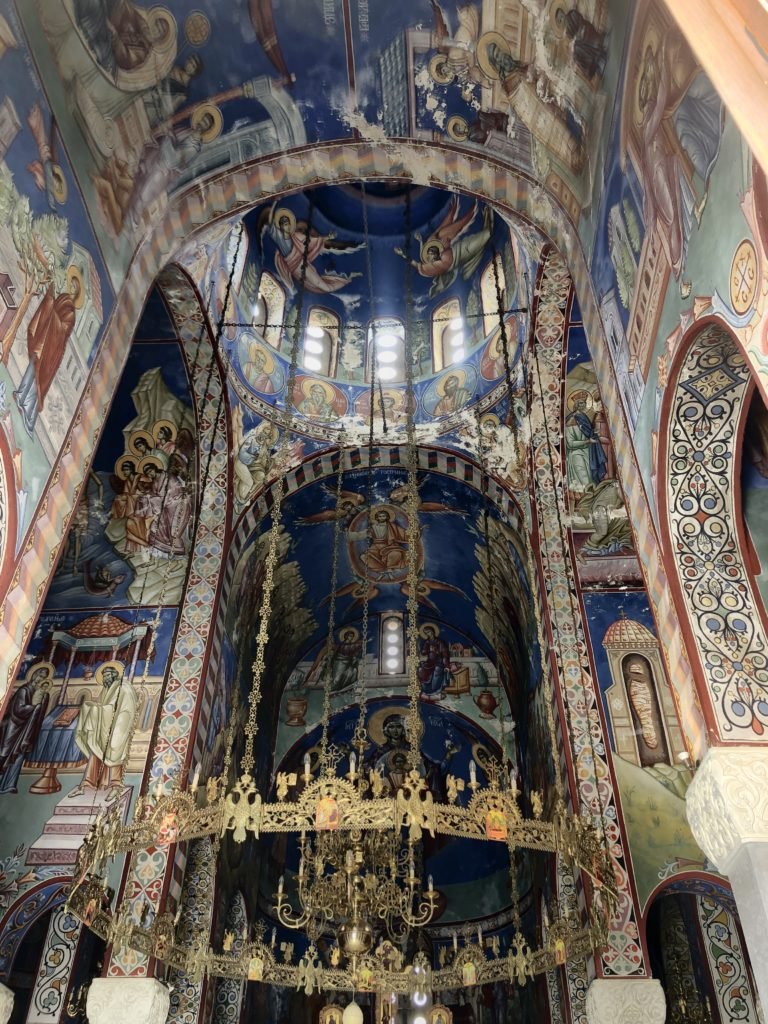
The inside of the church was bedecked with gorgeous frescoes and a gaudy chandelier.
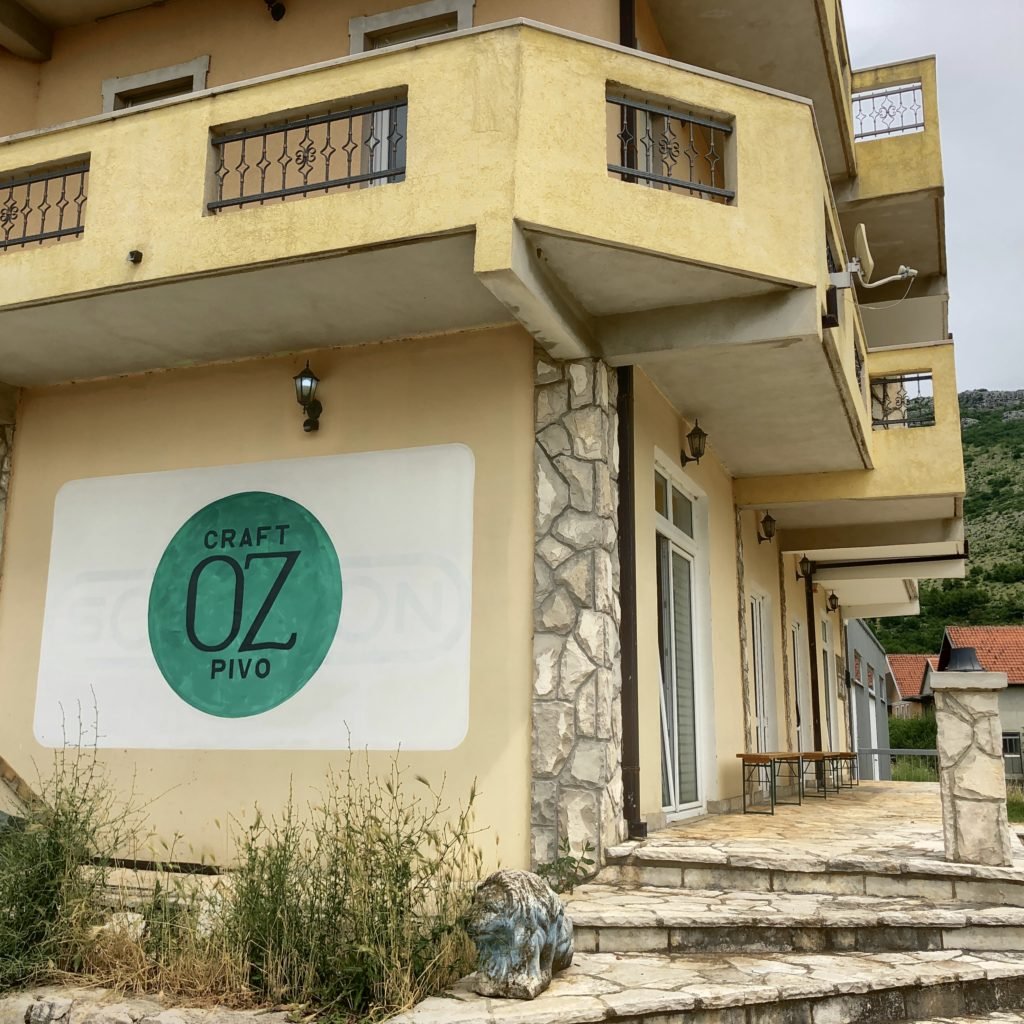
Amazingly, Greg managed to track down the newly opened nano-brewery Oz Craft Brewery operating, in of all places, tiny Trebinje. Of course he took the opportunity to do some beer “research”, and chatted with the American owner/brewer who had moved to B&H from Ohio about a year ago to set up shop. We told you this journey was about research. Greg, writes more in-depth about his experience at Oz Brewery on his ExplorerGenes_Beer Instagram linked below this post.
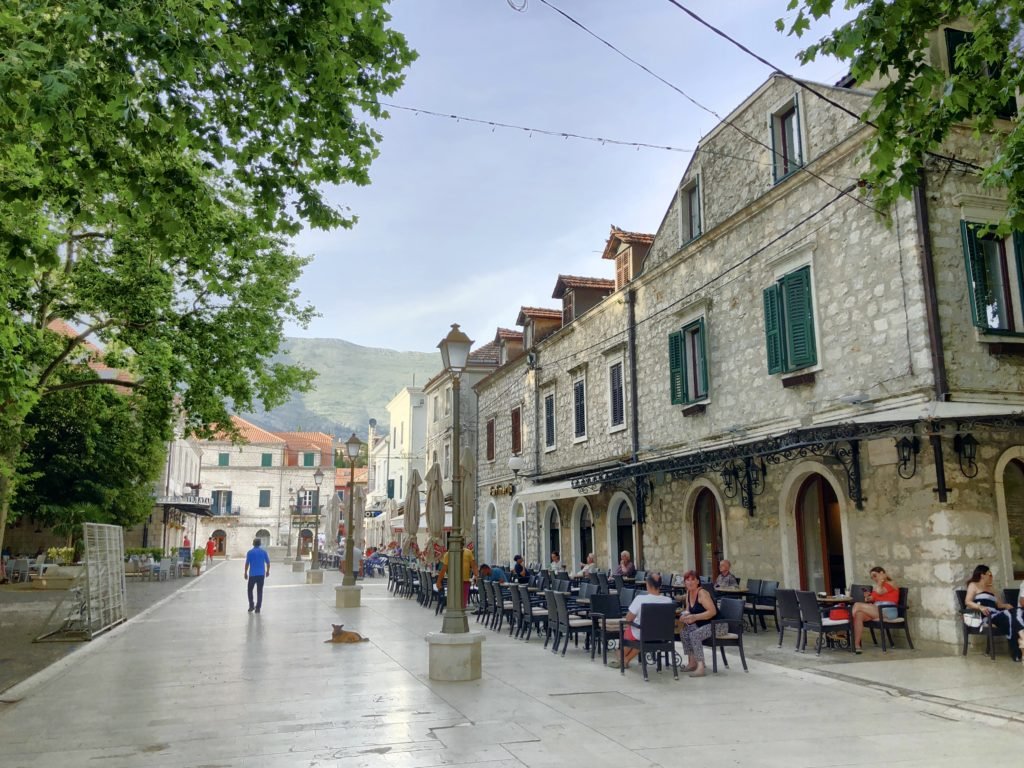
It was easy to understand why the brewer had chosen to set up shop in Trebinje. As mentioned, the town just had a home-y feel. Inviting cafes and strollable streets, which like in Albania, seemed loaded with walkers every evening.
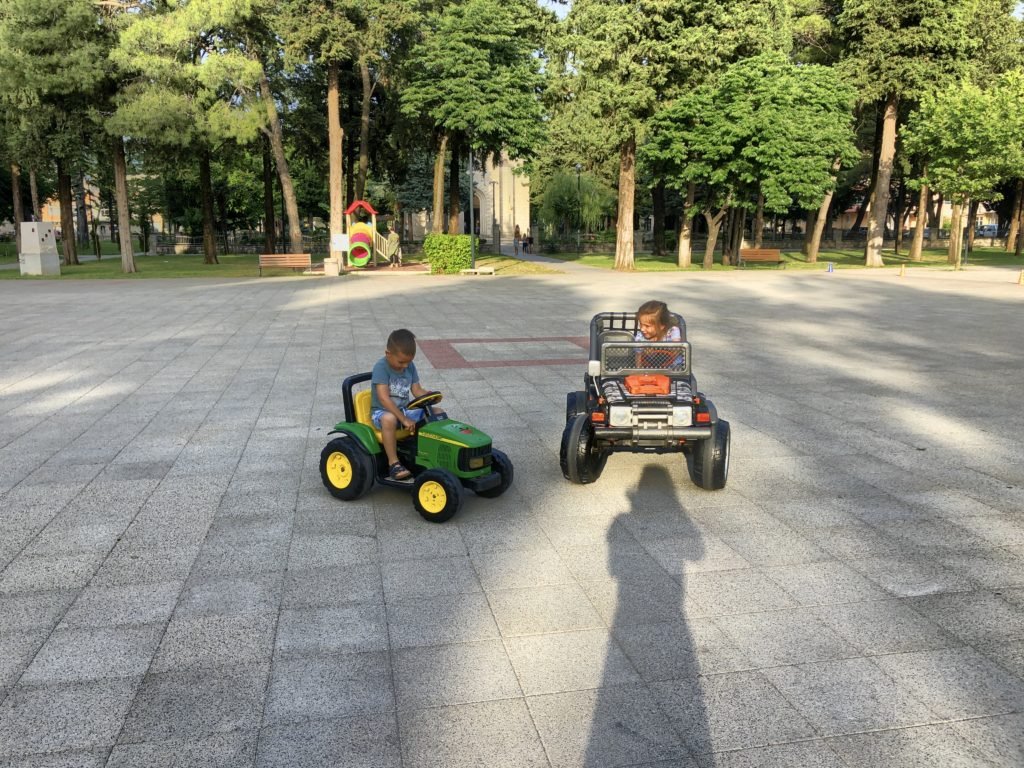
Kids playing in their Ameri-vehicles in the park.
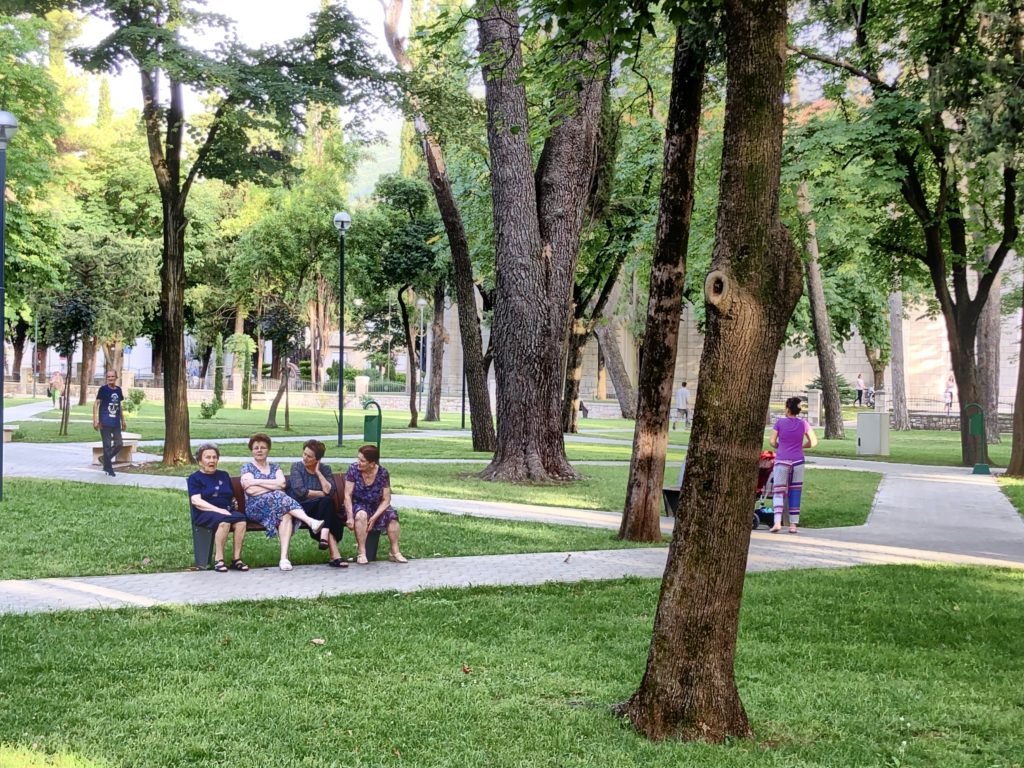
And old ladies clearly indulged in the latest gossip also in said park. It just had a real sense of community, and people, from the grocery store checkers to the servers, seemed pretty friendly here too.
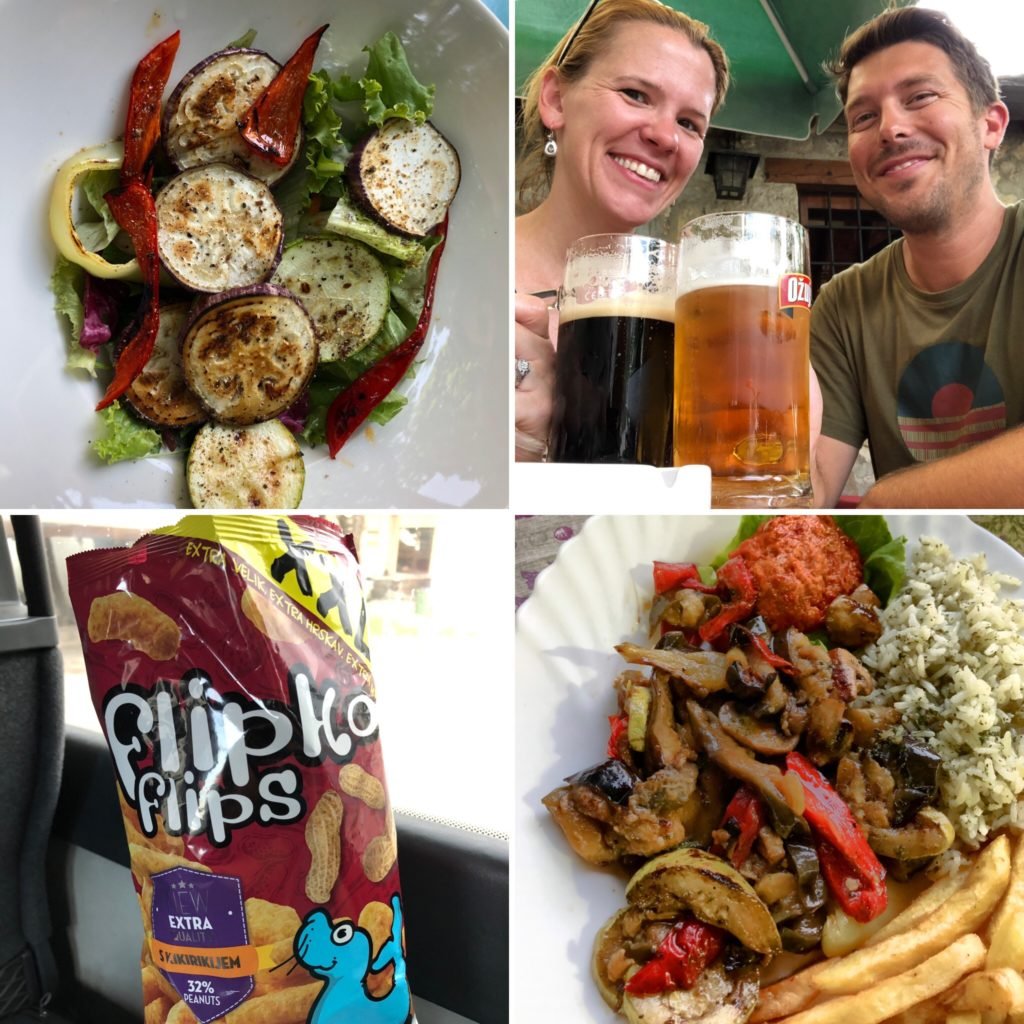
Food in Bosnia is undoubtedly a carnivores’ paradise. Their national dish is Cevapi, which is a grilled dish of minced meat, a type of kebab. This presented some challenges for Mandy until she realized you can get the most gorgeous grilled vegetables pretty much on demand. Also a very popular side (which we often just ate with bread or pasta) is ajvar sauce, which is a red pepper based sauce bursting with flavors. Choosing one in the supermarket was literally like choosing Doritos in the States (except healthy, naturally.) Dozens of fantastic options, all lying down slightly differently on the tongue. Speaking of Doritos, our snack of choice became Flipko Flips, which was basically a peanut-flavored cheese puff-like puff. They claimed to have 32% real peanuts, but were pretty sure this is like Cheetos saying they have real cheese. Regardless, all this can always be washed down with a good beer in Bosnia. ($2.50/half liter)

Mostar
Next we traveled three hours by bus to Mostar. Every blog you read about Mostar features travelers gushing about the magic of this town, which was tragically destroyed in the war and rebuilt within the last 25 years. And although the pictures are beautiful, it’s one place that is incredibly difficult to capture on camera. You just have to go, have to observe and have to be. It’s captivating in every sense of the word.

This was the view from our the Began House hostel patio ($7/bed/night), which was perched on the edge of one of the rivers gliding through town. It was lovely to hear the call to prayer from here and watch the people walking over the nearby bridge.
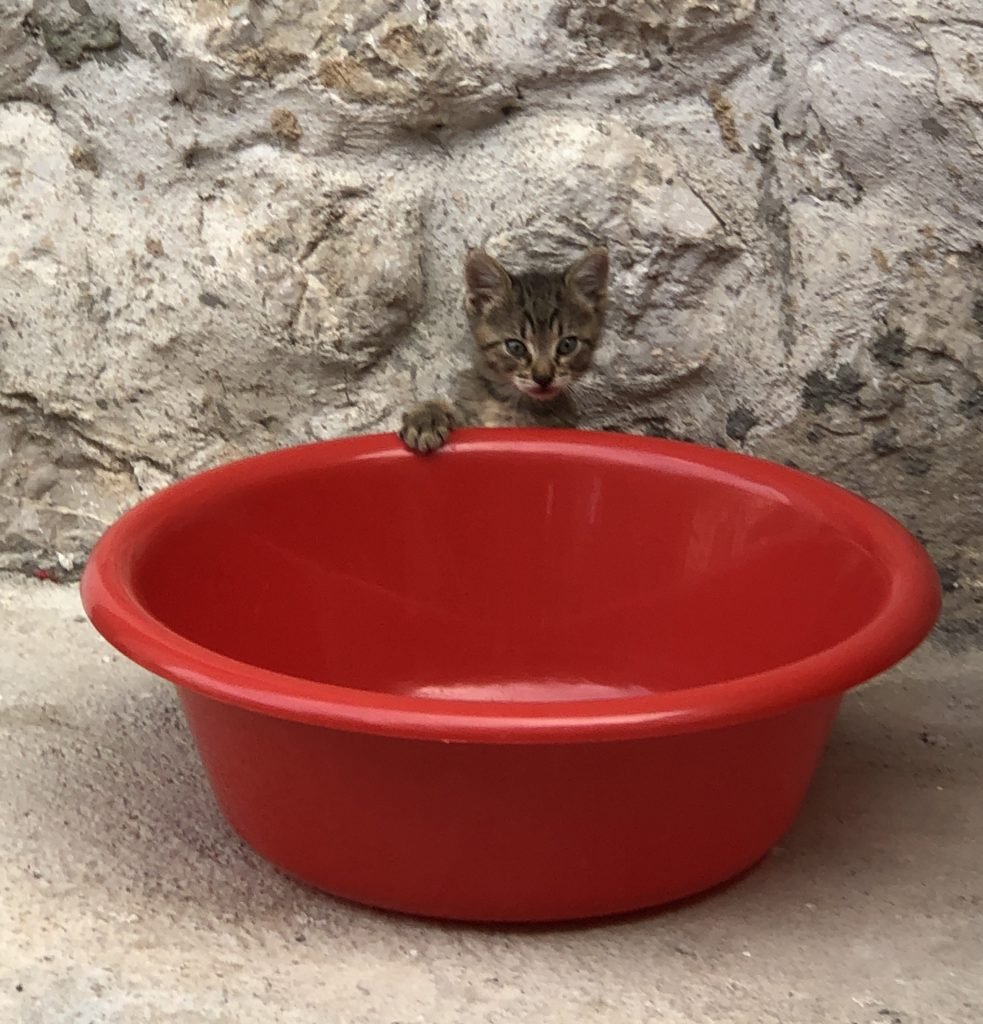
The hostel, which we’d definitely recommend, also featured a cute little mascot that we couldn’t get enough of.
Mostar undoubtedly deserves at minimum a two night stay. We did three. There is no question that Mostar is most gorgeous early in the morning, long before the day trippers arrive from Dubrovnik.
Mostar is separated by two rivers…the Neretva and the Buna. The name of the city came from Mostari, which came from the bridge keepers who used to guard the bridge in medieval days.
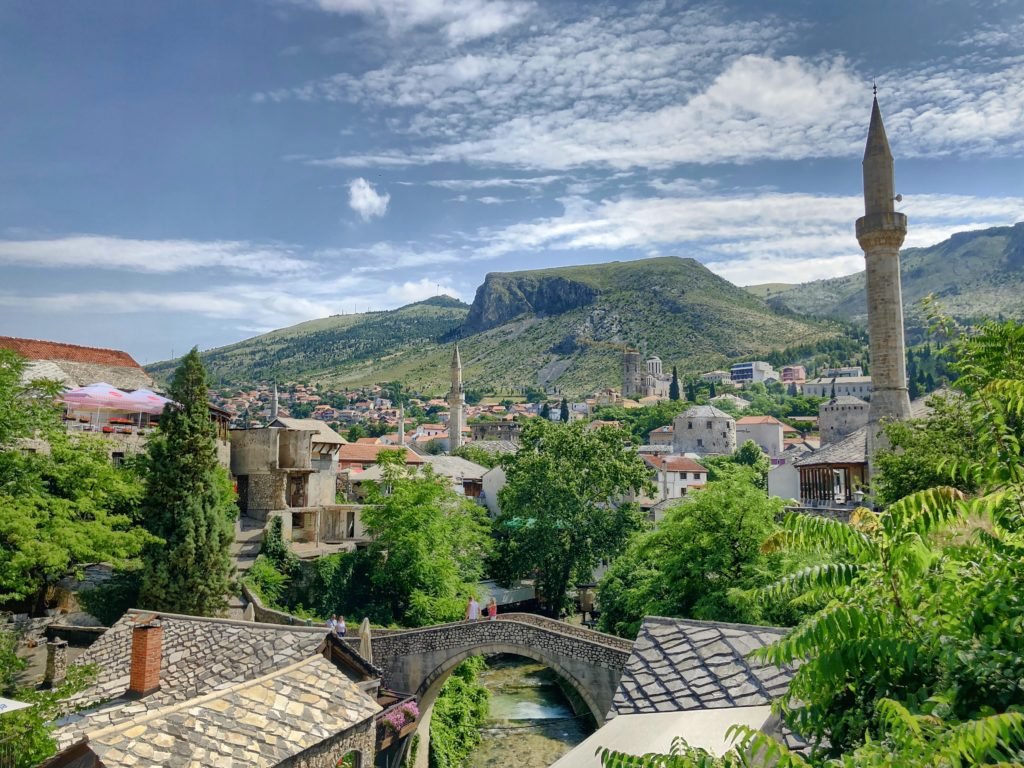
The minarets beautifully dot the horizon. Out of the thirteen original mosques dating from the 16th and 17th centuries, seven have been lost during the 20th century for ideological reasons or by war. Today the east side of the river is mostly Bosnian and the west side mostly Croat.
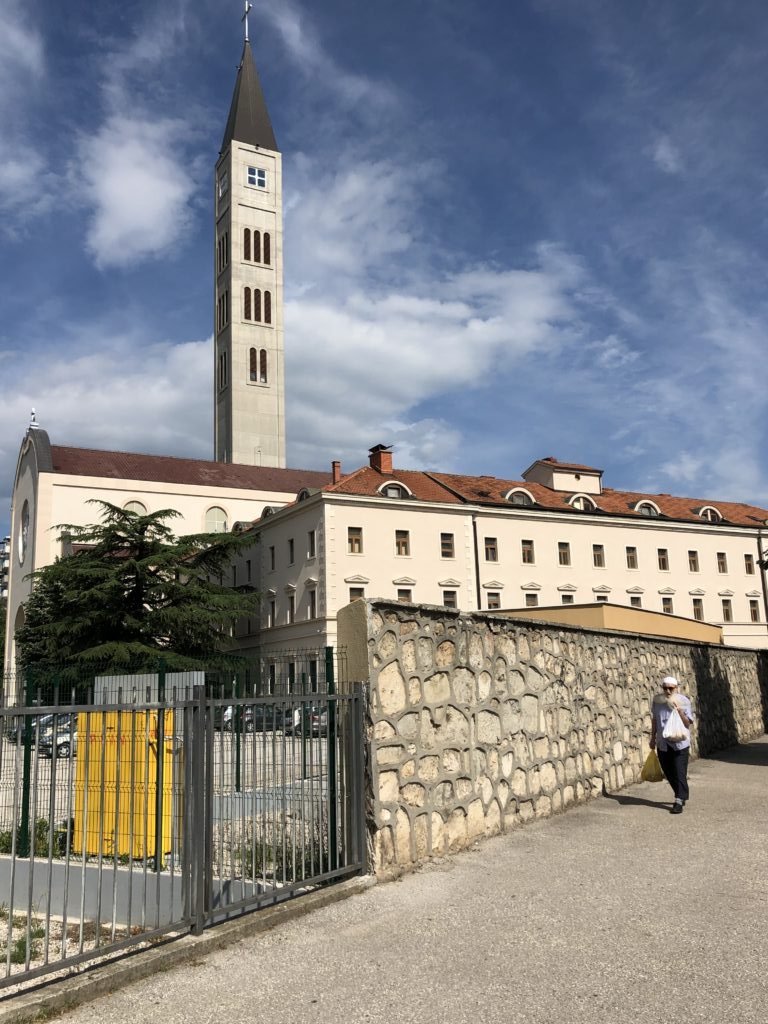
On the west side, the Catholic church and Franciscan monastery of St. Peter and Paul was also destroyed in the war. However, the tower that was rebuilt after the war is obviously quite taller than any of the surrounding minarets. Sorta seems like a giant middle finger to us…?
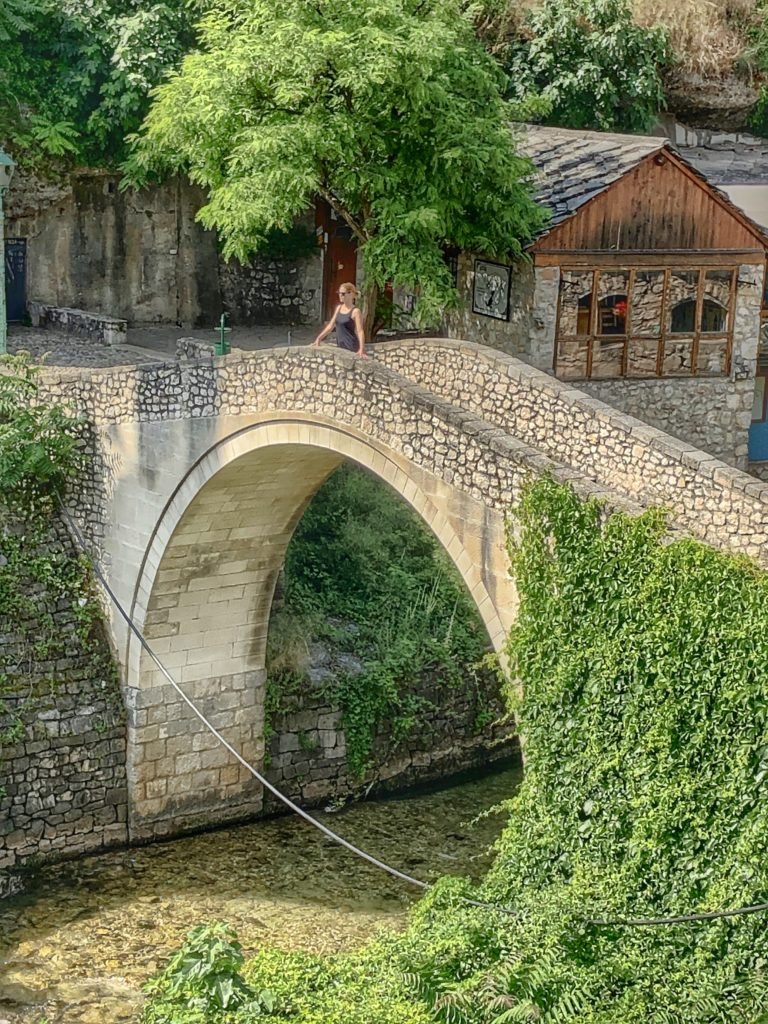
Mandy pauses on the Crooked Bridge—a smaller, less crowded and greener version of the old bridge a few footsteps away, which crosses the lesser of the two waterways (Buna).
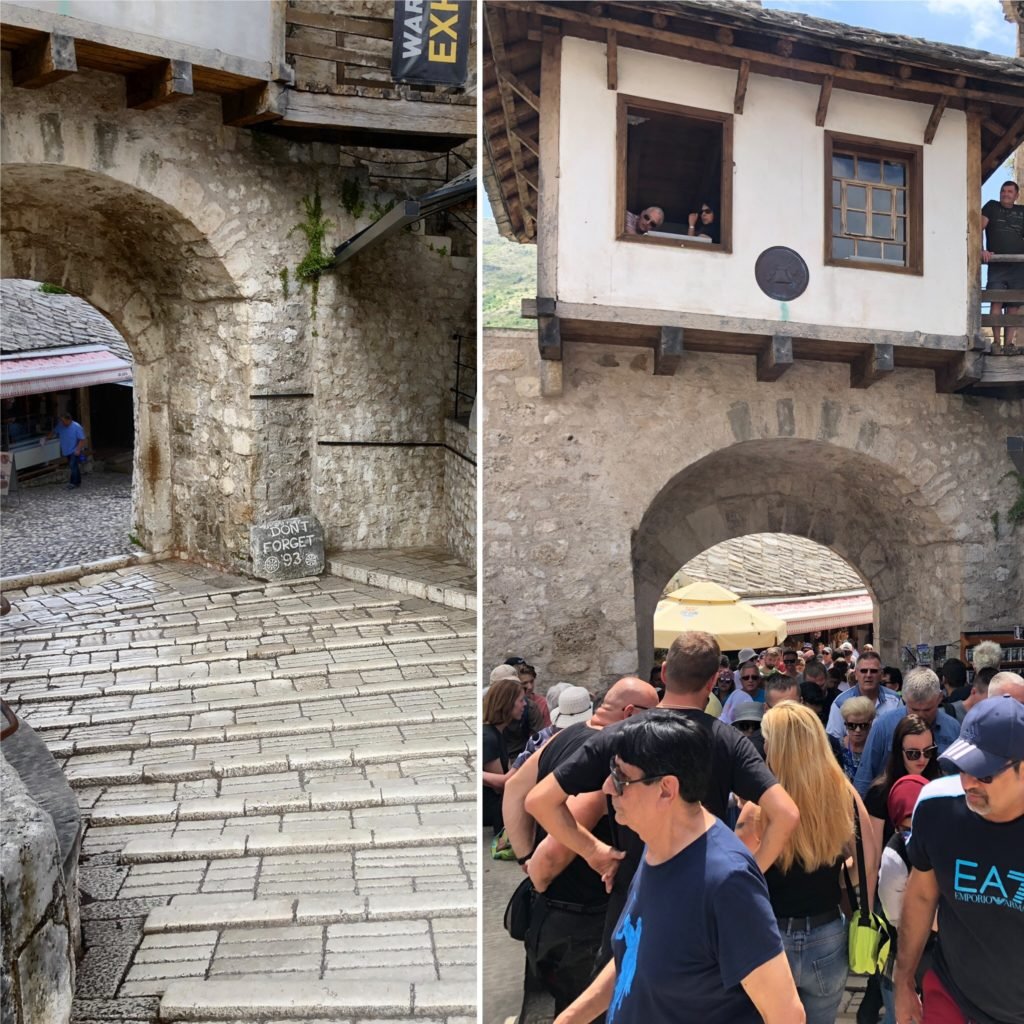
Atop Stari Most, the famous old bridge taken at 7 am and again at 2 pm. In the one that isn’t covered by the zoo of Homo sapiens and you can actually see the bridge, you’ll notice the notched ridges built into the stone, presumably to keep you from sliding. The arch of the bridge is a steep one and definitely deserves some extra caution.
A common reason to trip is because you’re gawking at the large beefy dude in speedos perched on the edge of the bridge. Everyday, these guys collect money from the crowd and once they have 50€, he’ll plummet off the edge into the very frosty, and very fast churning waters 24 meters (78’) below. (Side note: people in Bosnia are really tall!)
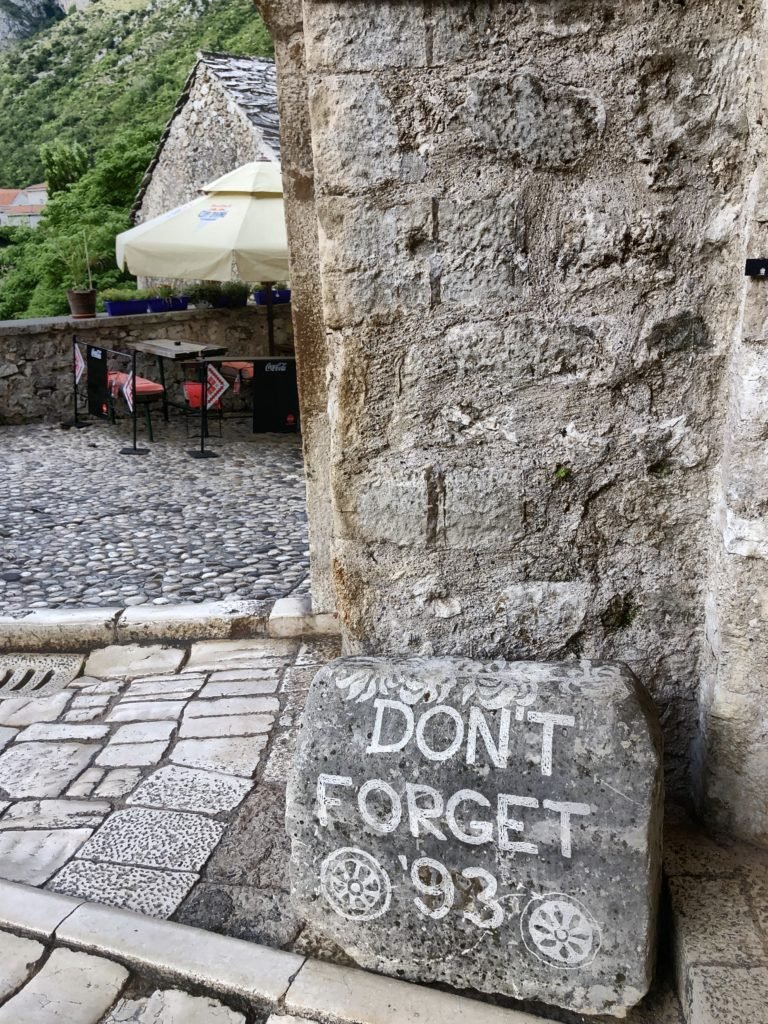
At the end of the bridge is a commemorative plaque to remind everyone of the horror of this 500-year old Ottoman bridge, the most striking example of Islamic architecture in the Balkans, tumbling down in 1993 by the Croat Military forces. It was rebuilt in 2004.
So, why did the war start? We learned it depends on who you ask. Some will say Serbia. Some will say Croatia. Some will actually say the USA. You’ll also get some other oddball answers. When Yugoslavia was a nation they had eight leaders from each territory. (Can you imagine trying to get anything done?!) According to Francis Tapon’s book, “The Hidden Europe,” the one thing that is clear is that before the war “Milosevic and Tudman, the leaders of the two biggest tribes, conspired to divide Bosnia between themselves. A year later, Serbs controlled 70%. Today, it’s 49%.” (By the way, we HIGHLY recommend this book for anyone traveling to or is just interested in Eastern European history. We’ve gotten so much insight, and he’s a really funny, entertaining author.)
Clearly, no matter who started it, it was an absolute tragedy and unfortunately many of those tensions still exist today.
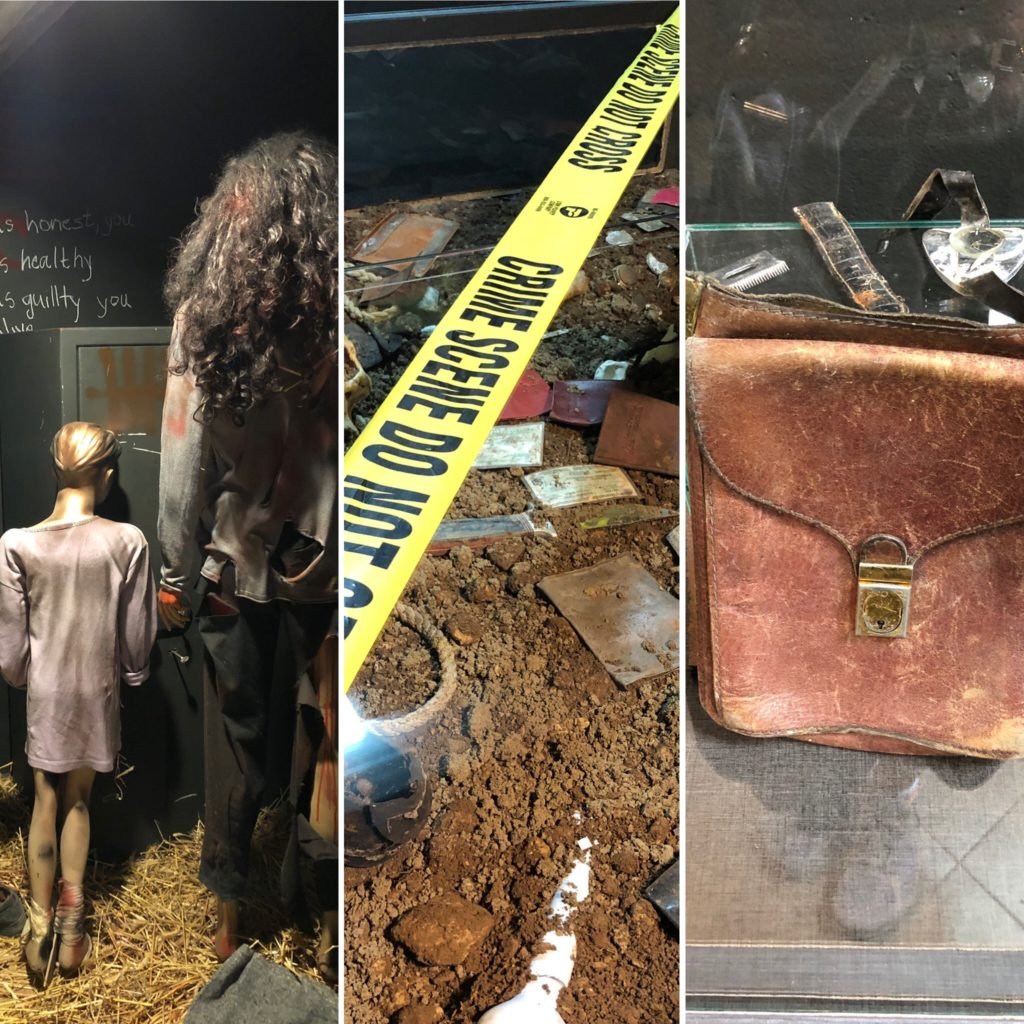
In the war, ~150,000 people died for many would argue, no reason. All three ethnic groups were probably guilty of something, but unfortunately the Bosniaks (Muslims) were the hardest hit due to the “ethnic cleansing” that ensued in the form of concentration camps where civilians were harassed, raped, tortured, starved, and killed. We learned a lot of this through Mostar’s Museum of War and Genocide Museum, as well as a tear-jerking survivor’s personal account called, “Haunting from the Past” by Sanela Ramic Jurich.
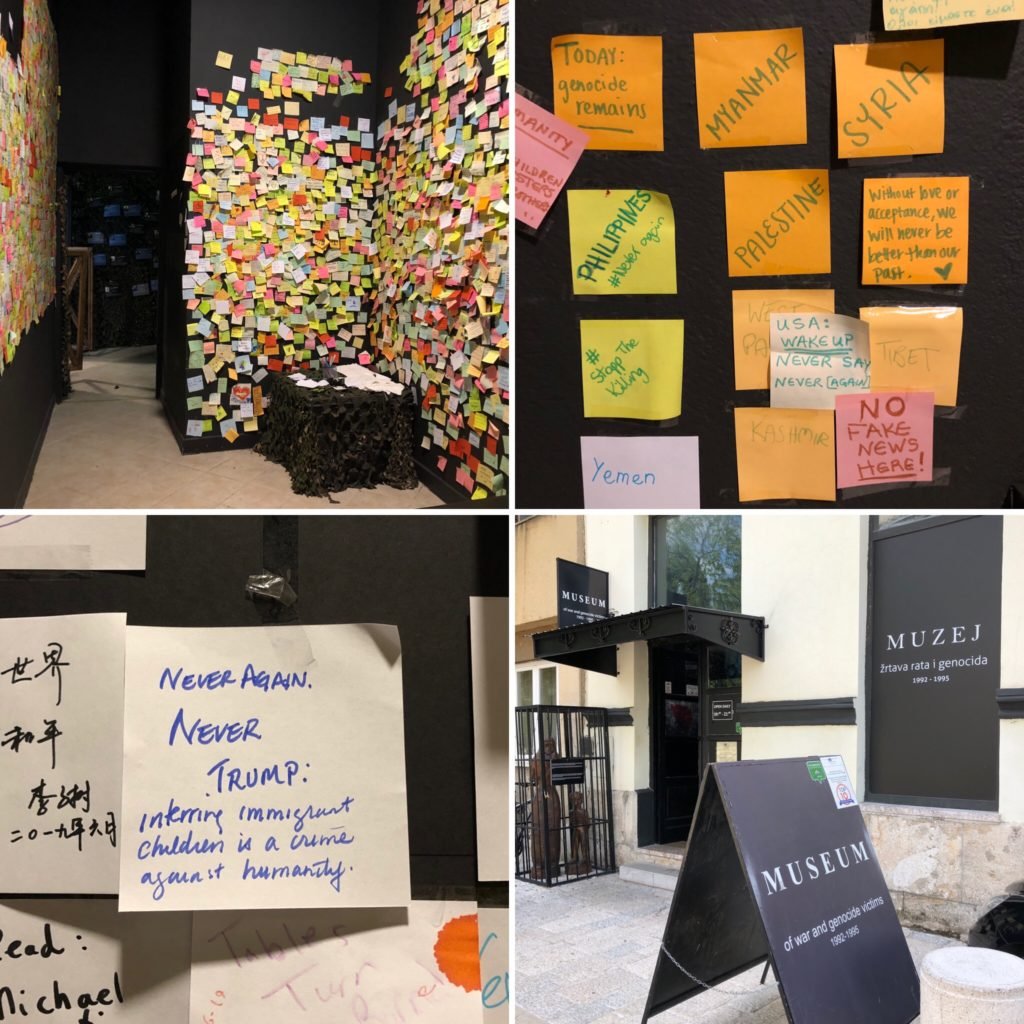
It’s difficult to hear of this stuff. Although we’ve seen many depictions of this heinous behavior of mankind through places like Auschwitz, heard personal survivors of the Holocaust speak, and the Armenian Genocide museum, we’ve never felt so affected as in B&H. This happened in OUR lifetimes and we’re utterly embarrassed to know so little about it.
In the museum, we listened to a grown man bawling near us, looked at personal items from victims like modern-day CK watches and baby bottles, and witnessed a wall of post-it notes from all over the world bearing well wishes like “never again.” But this behavior is happening again. And will continue to happen again until we truly start learning from mistakes, teaching compassion, and loving our neighbors. Us versus them is never okay.
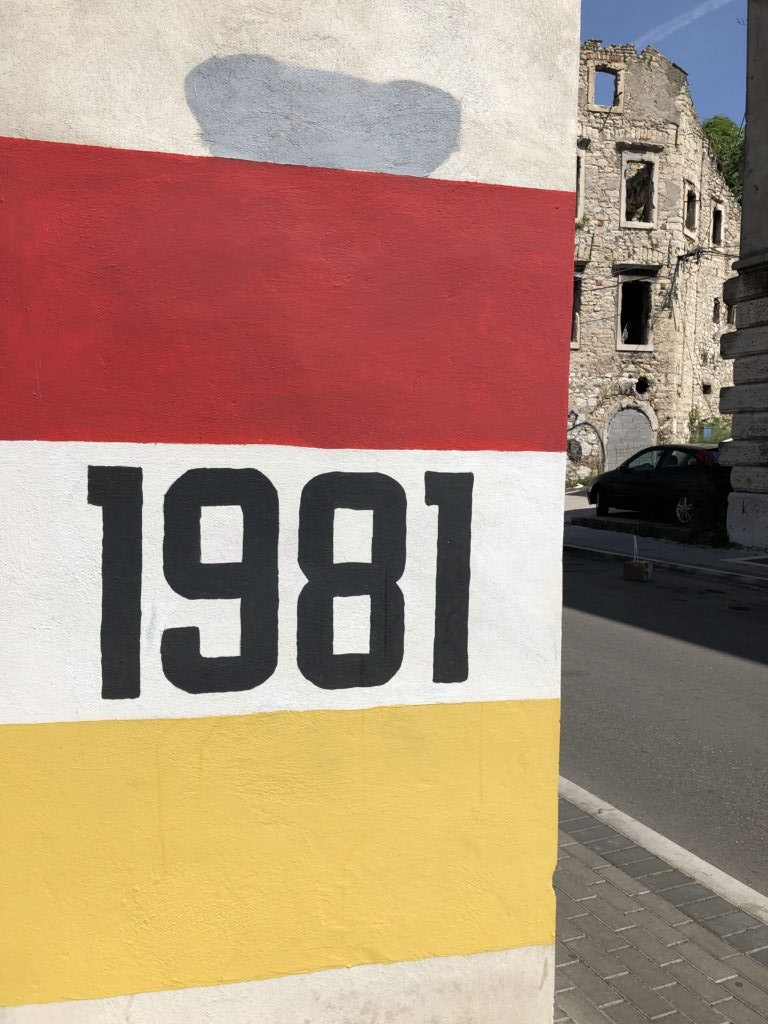
All over Mostar we kept seeing the year “1981” on everything. We couldn’t place that year as having historical significance. According to google this is football related… 1981 was the year the Red Army was founded, the name of the supporter group of Bosnian football club, FK Velež Mostar. So basically, the Timbers Army of Mostar, for those that get our reference.
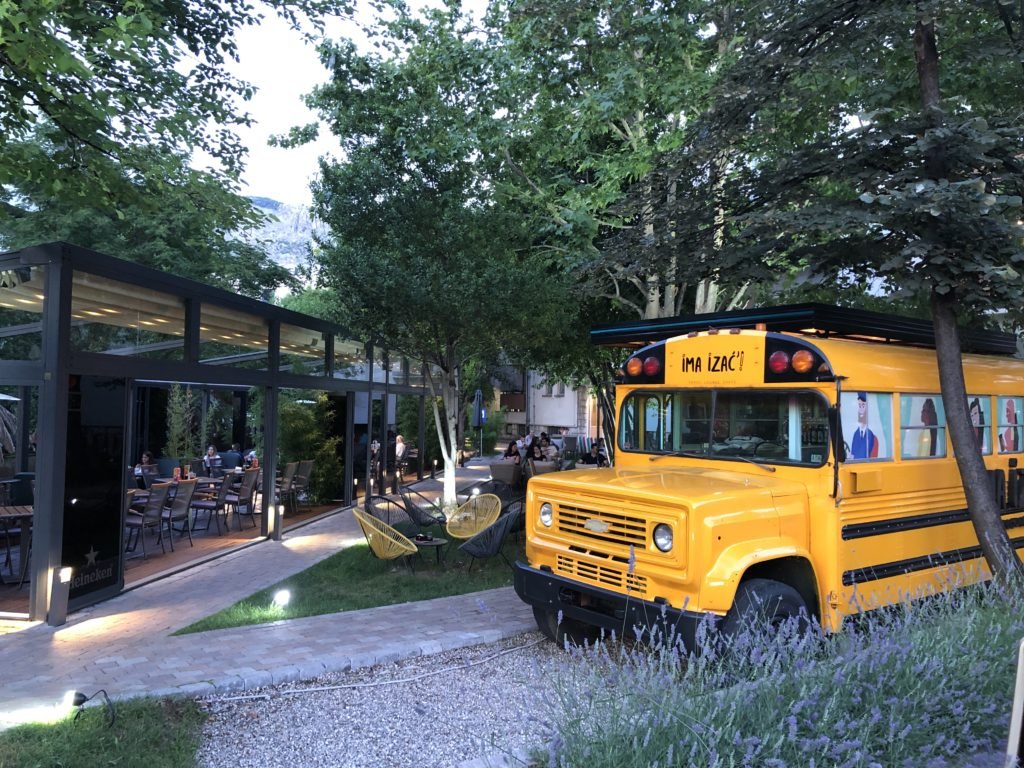
While most tourists just stick to the Old Town of Mostar, one of our favorite evenings was walking down to the new town pedestrian walkway area, where the locals congregate. We loved seeing little slices of Portland on the streets of Mostar, like this school bus turned into a fast food joint.
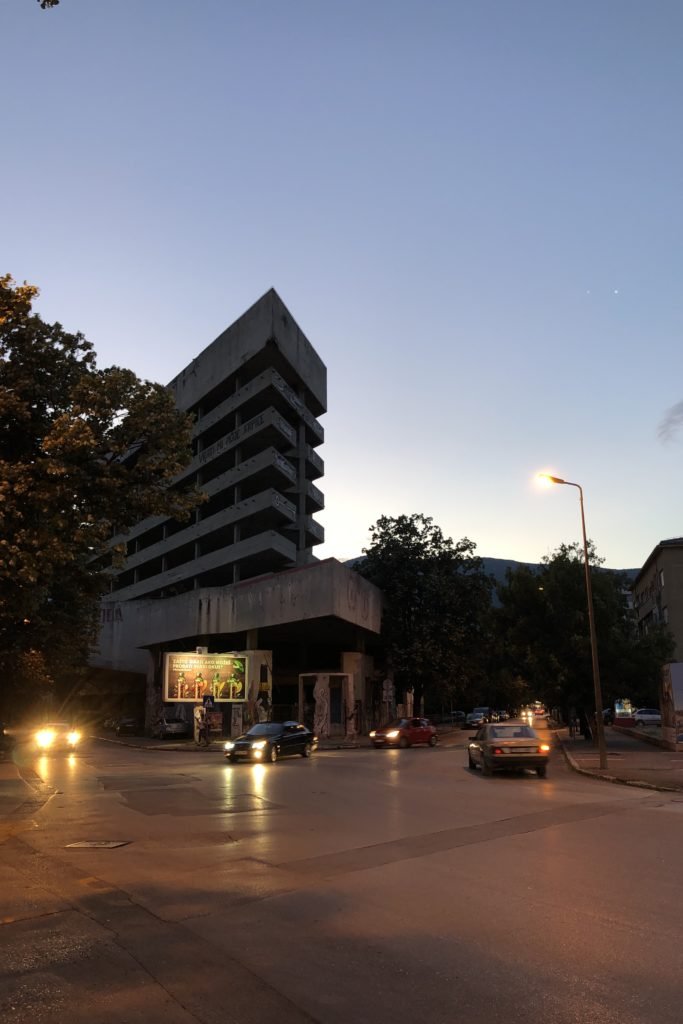
While strolling, we continued to be reminded of the reality of where we were and what had happened here. This building was originally meant to be a bank, but instead when the war broke out, it became known as Sniper Tower. You can probably guess why. Yes, the snipers would hide inside and shoot civilians as they passed by.
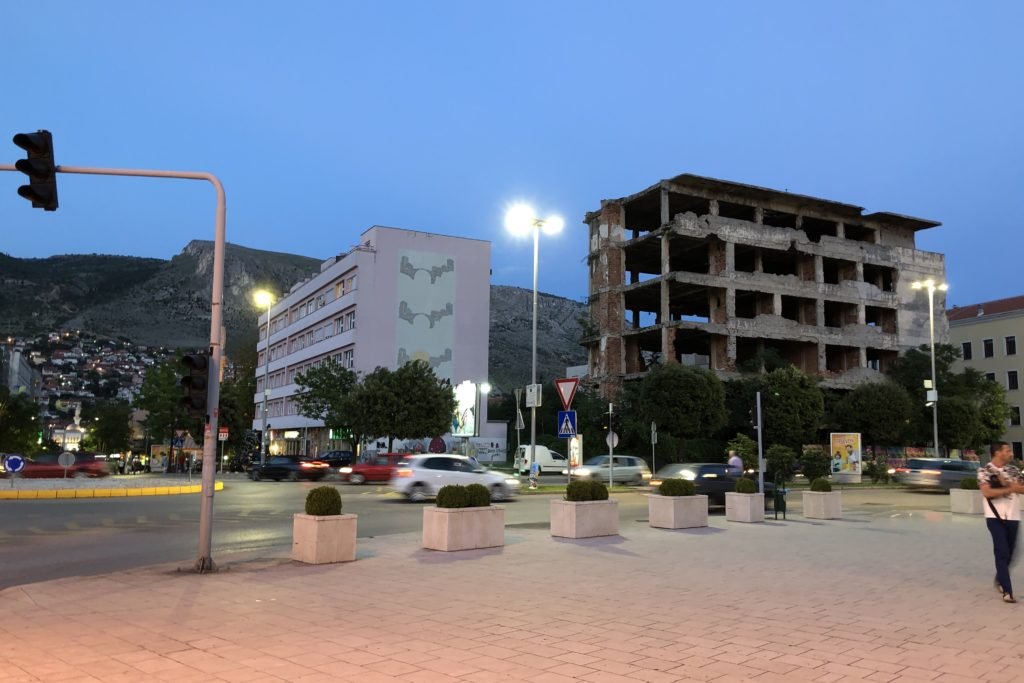
Directly across from the bank of sniper, there continued to be more skeletons of buildings littering the pavement. It was hard not to look at the Bosnian people all around us and know that anyone over 25 would have been deeply affected, many losing loved ones, by the insanities of politics. Or to see a child, and know that he or she could have ended in a concentration camp in recent history.

Bullet holes and shrapnel byproducts are painted all over the city. The eerie remnants just made it feel very real, raw and heartbreaking.
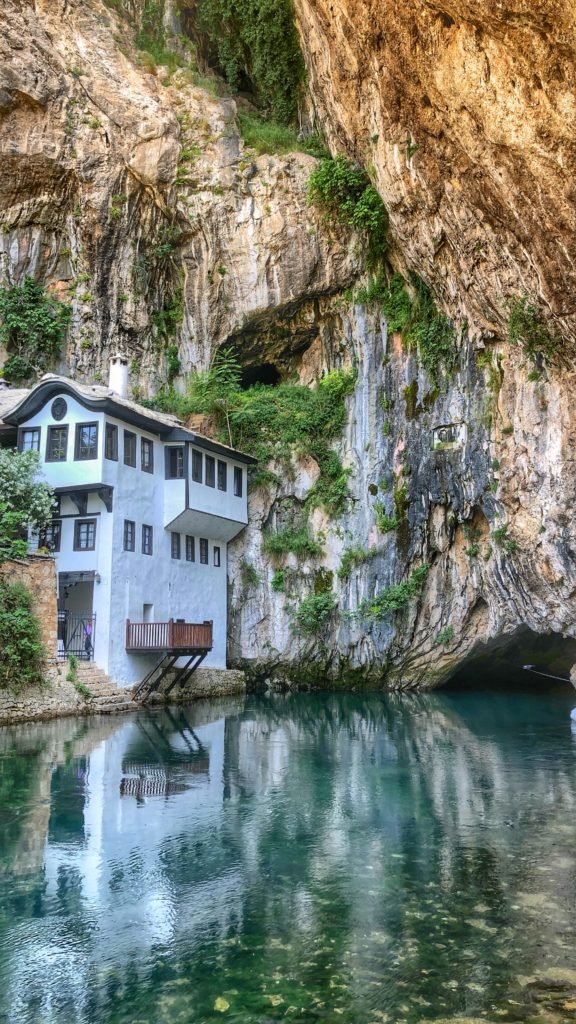
On a different day, we decided to take the local bus about 30 minutes down to the town of Blagaj, mostly to check out the Dervish House commonly known as Tekija Blagaj. It is an insanely picturesque Dervish monastery dating back to 1520 and is now a national monument. Followers of Dervish, which is a “sect of Islam, sometimes deemed mystical”, says Google, take a vow of poverty and austerity. It sits at the base of a steep cliff where the emerald Buna river begins, seemingly flowing out of nowhere from the mouth of a cave.
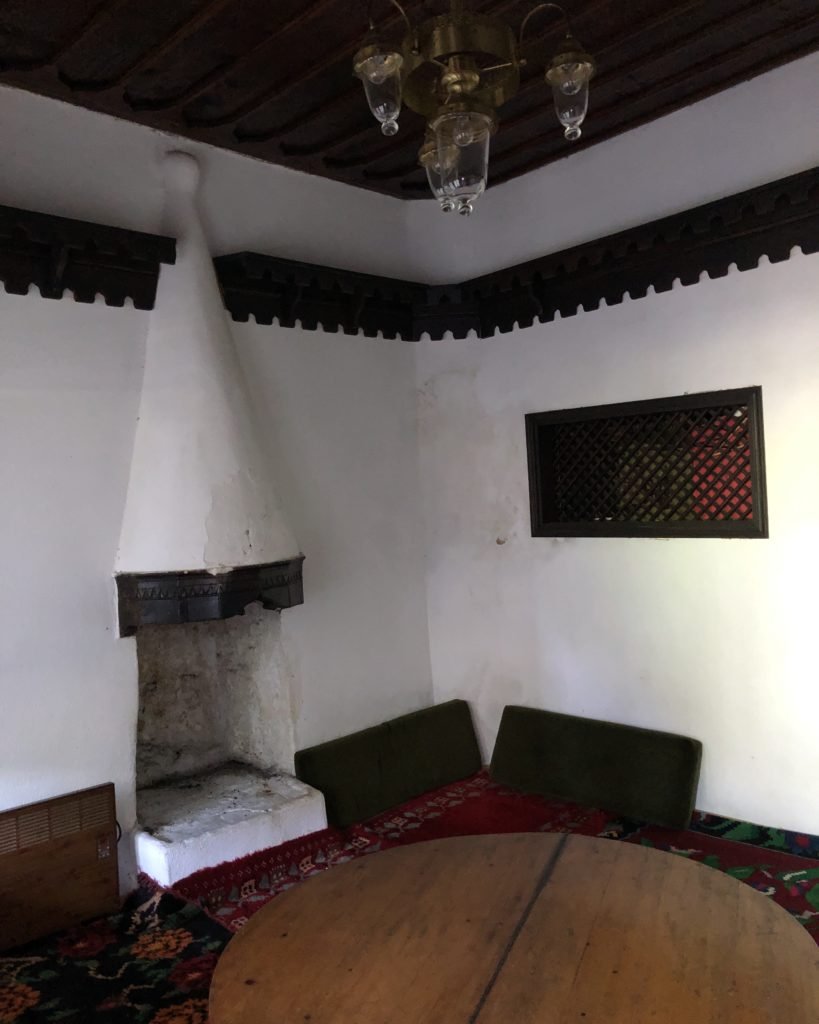
Exploring the inside of the Dervish House and its classic Ottoman architecture.

Mandy peers out the window onto the river. This place brings a sense of serenity that is indescribable.
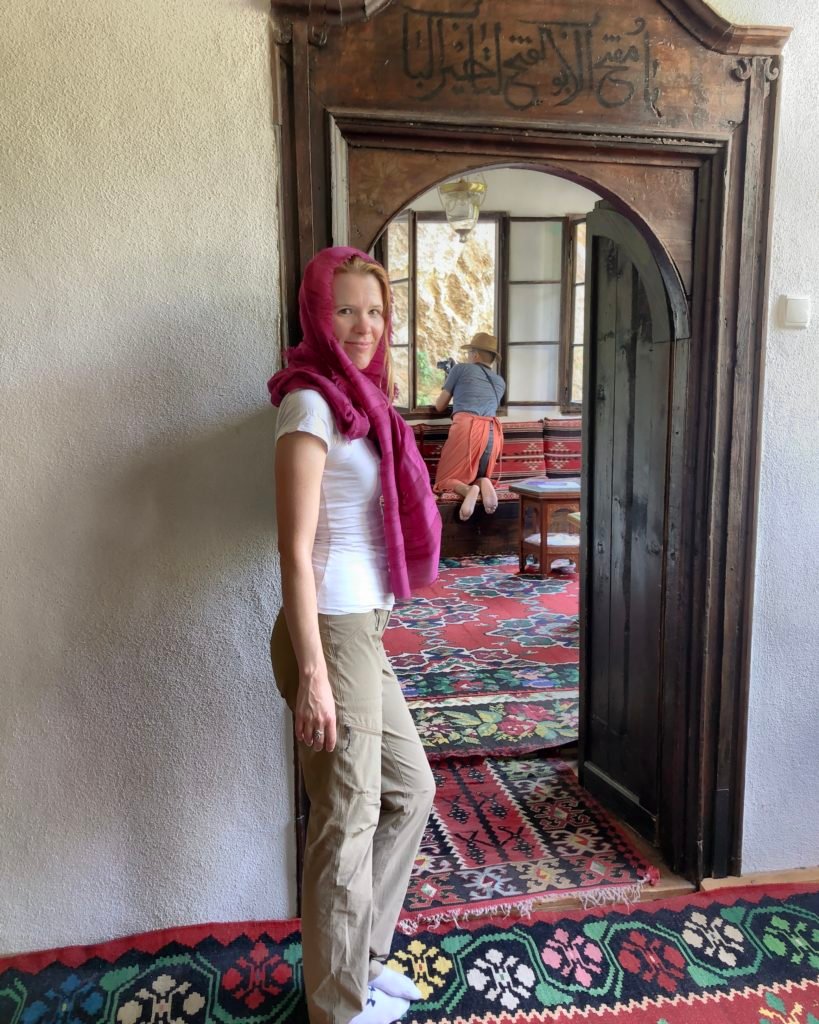
To enter, it’s required for women to cover their heads and everyone “to cover their legs” as well as remove their shoes. Shawls are wraps are provided for those who are unprepared.

The intricately carved wooden ceiling of Dervish House was just remarkable.

Another beautiful ceiling in stained-glass in one of our favorite rooms in the house…what was once the hamman or bathing room. The stars look like beads for a little girl’s necklace.
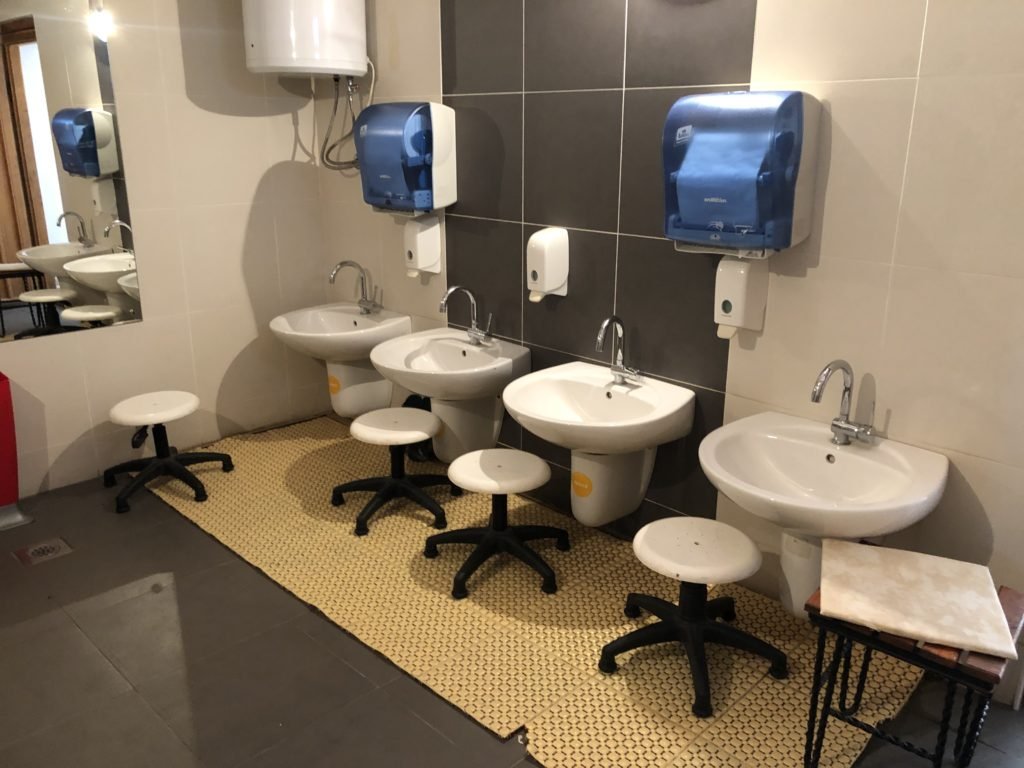
The more modern bathing room. It is standard practice for Muslims to wash their feet before entering the Monastery (or any mosque), but we’d never seen a washroom quite like this one!

Another view of the river in Blagaj.
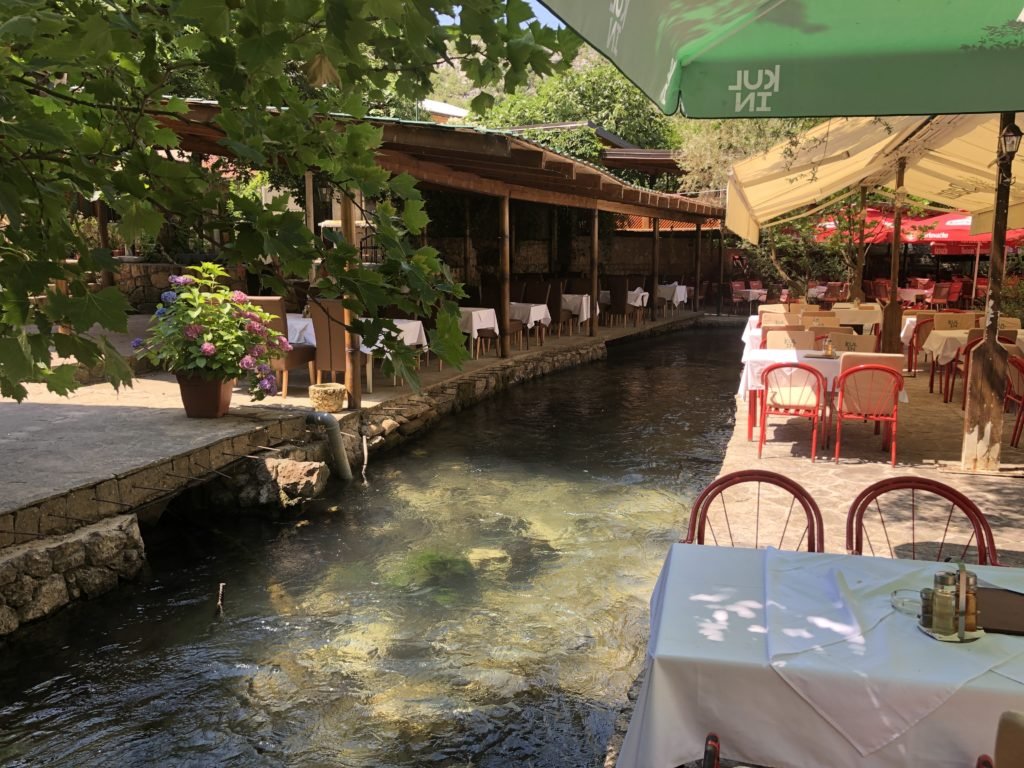
Complete with adorable cafes and restaurants that blanket the flowing water and connect together via little bridges and paths.
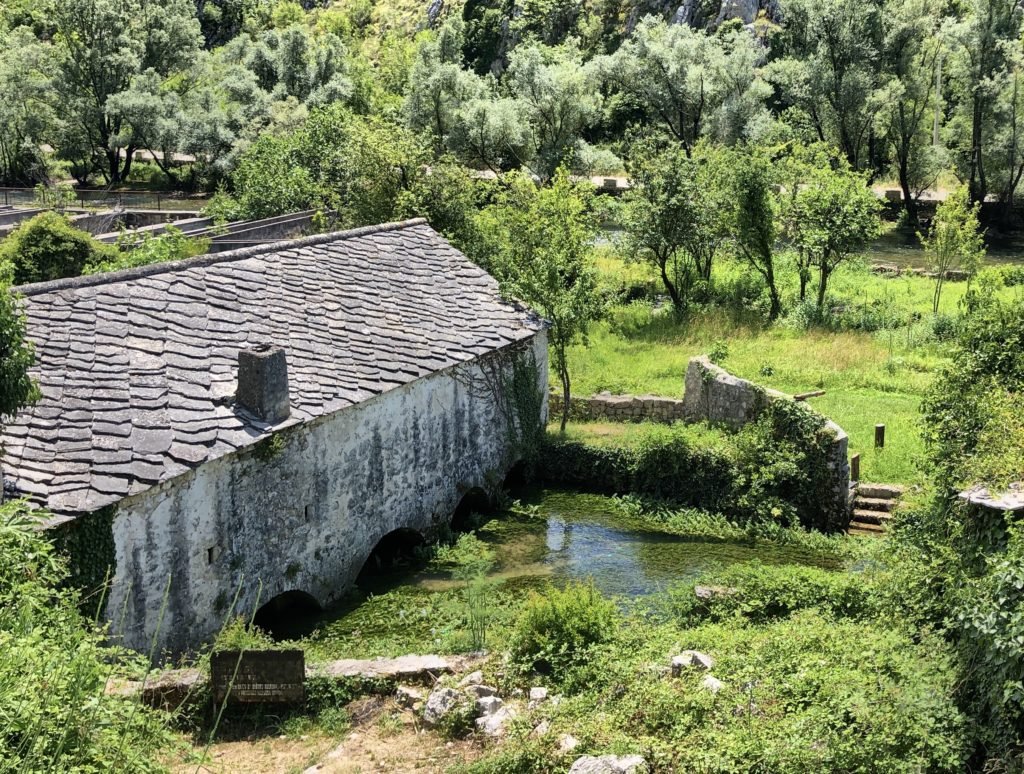
Another aspect we really enjoyed in Blagaj was the historic houses and buildings with stone rooftops. This one was actually designed so the river flows under it.
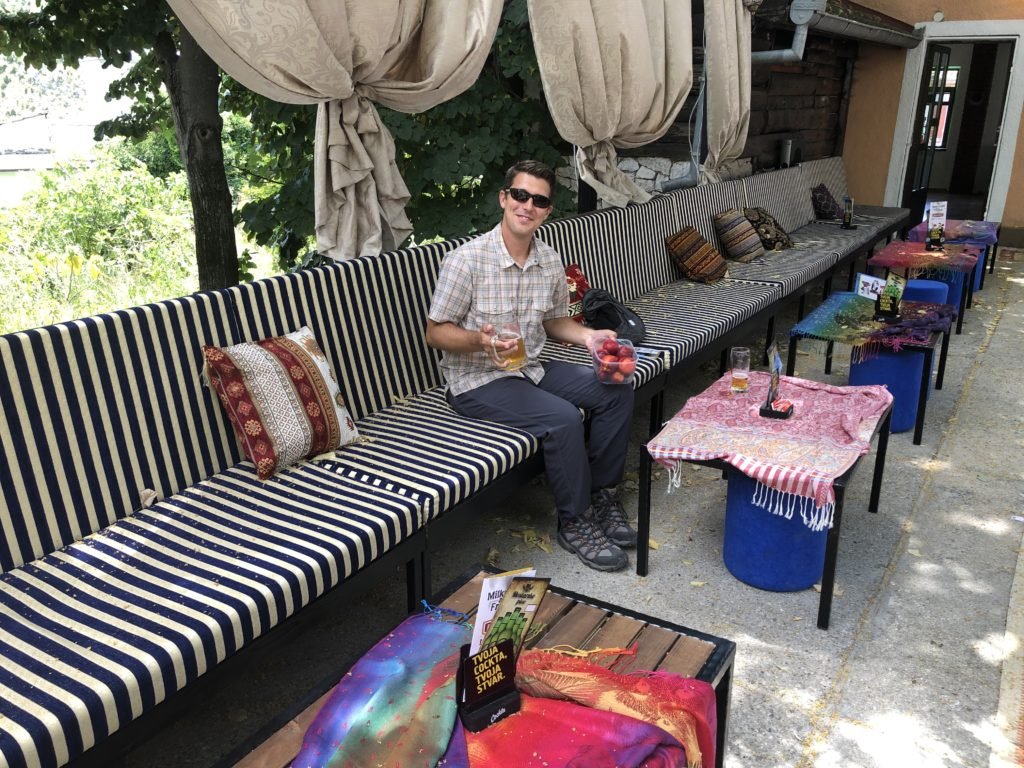
After sightseeing, we purchased some nectarines from a roadside stand and then visited a Turkish-Style cafe for a beer. Almost as soon as we plopped down at the cafe, a two-year old came over to our table and swiped a nectarine right out of the box. Fortunately his parents were very responsive about the thievery and even bought our beers for us!
The next day we rented a car which we shared with Kim, a friendly and well-traveled Brit from our hostel. First stop was Kravica Waterfalls…roughly 25 meters high and separated into 20 falls. Best part? Unlike other falls of its caliber, you can swim here! Word is getting out though due to heavy advertising so arrive early.
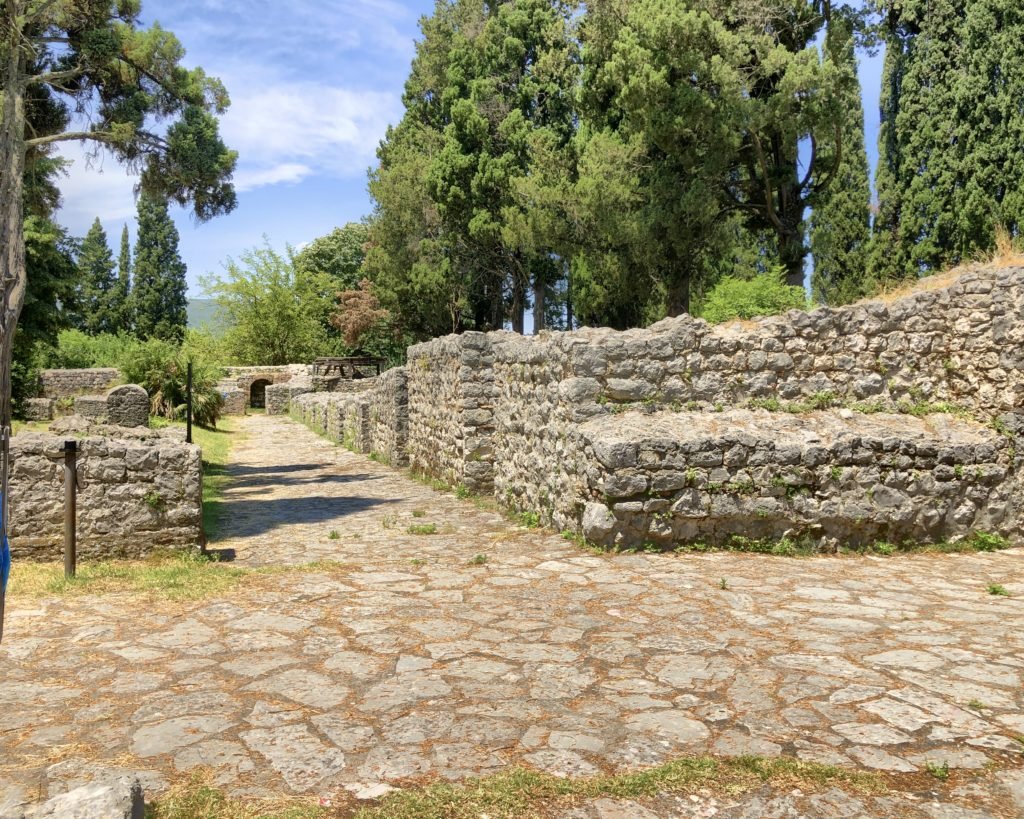
Stopping by Mogorjelo, an ancient Roman villa site dating from the 4th century.

Enjoying a huge traditional Bosnian lunch with Ćevapi, fish soup, tomato salad, and eggplant/pepper salad. ($13)
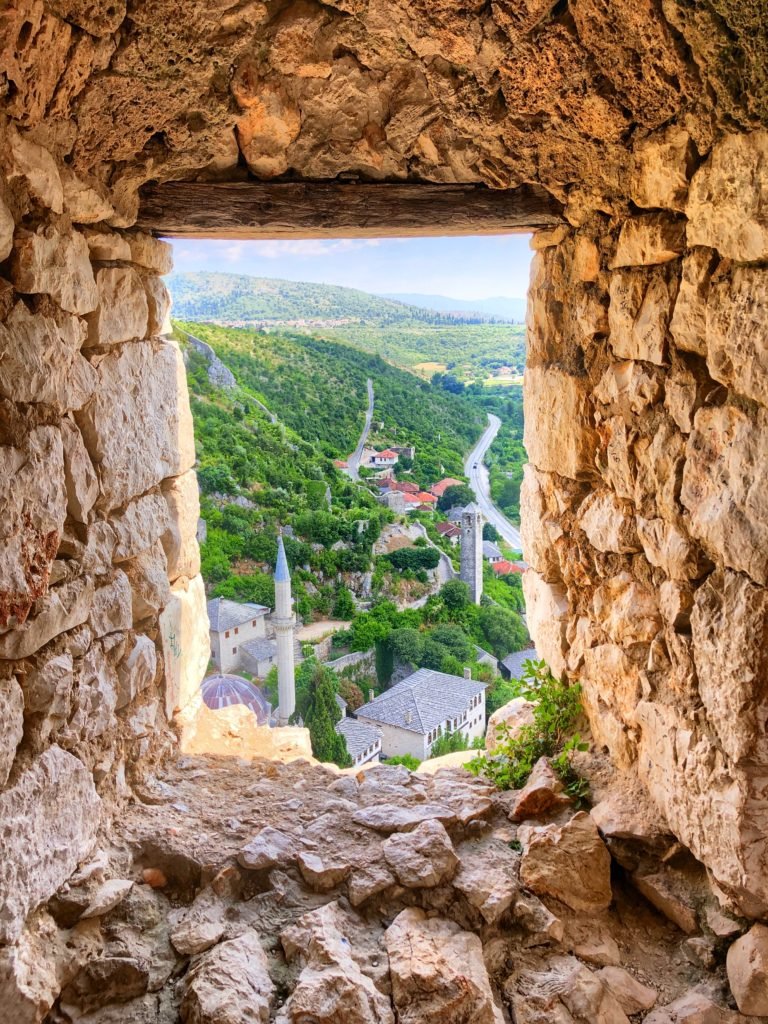
Like looking through a window to the past. Pocitelj is a medieval amphitheater-shaped village dating from 1383 about an hour south of Mostar and a place in which very few tourists seem to track down. It’s a perfect symphony of architecture and nature combined. Absolutely spellbinding.
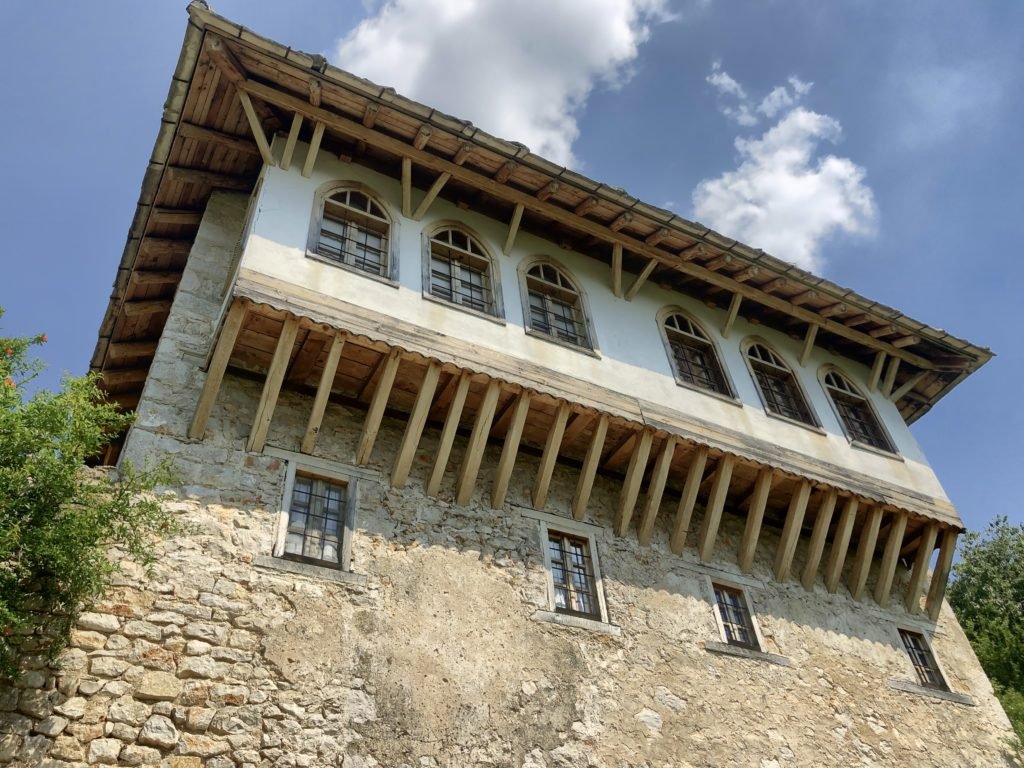
The Ottoman architecture in Pocitelj is just astounding!
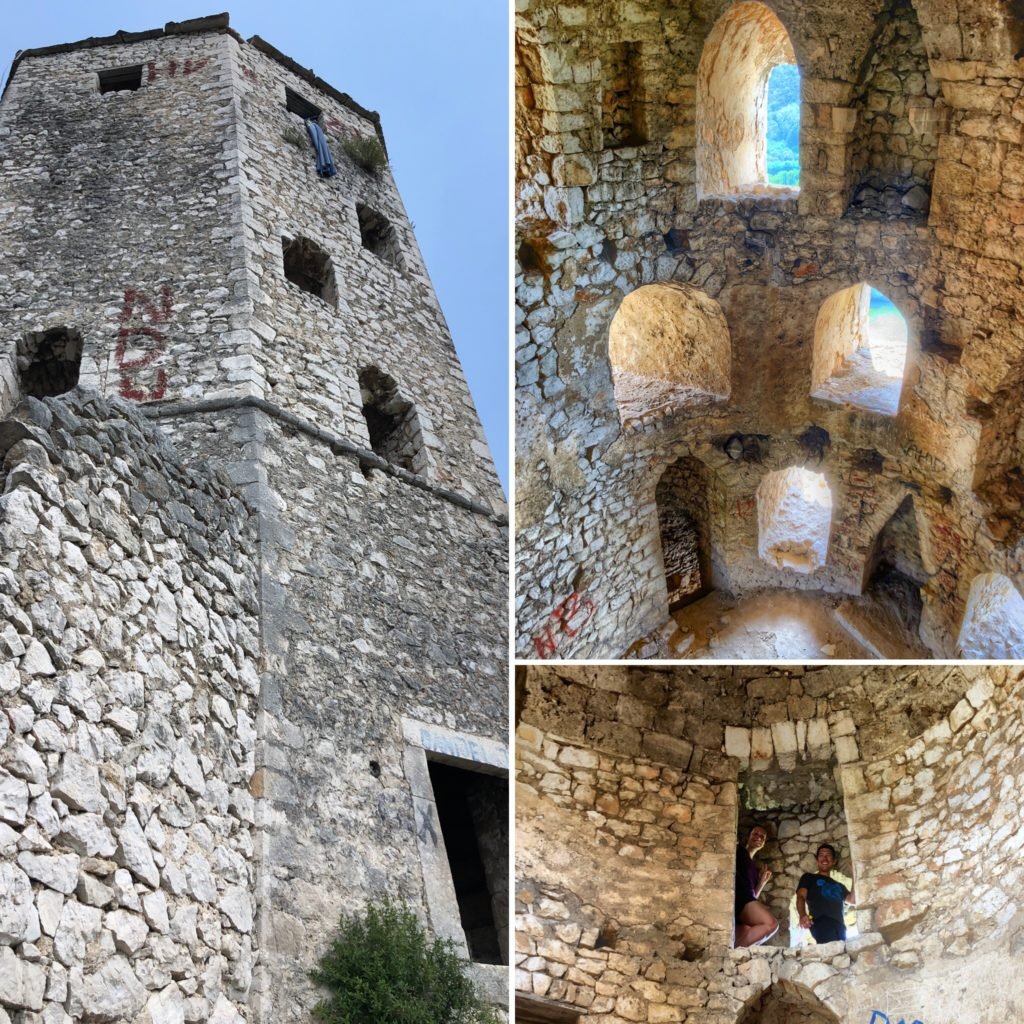
Climbing the octagonal Gavrakapetan Tower in Pocitelj was unlike any other tower we’d ever adventured in!
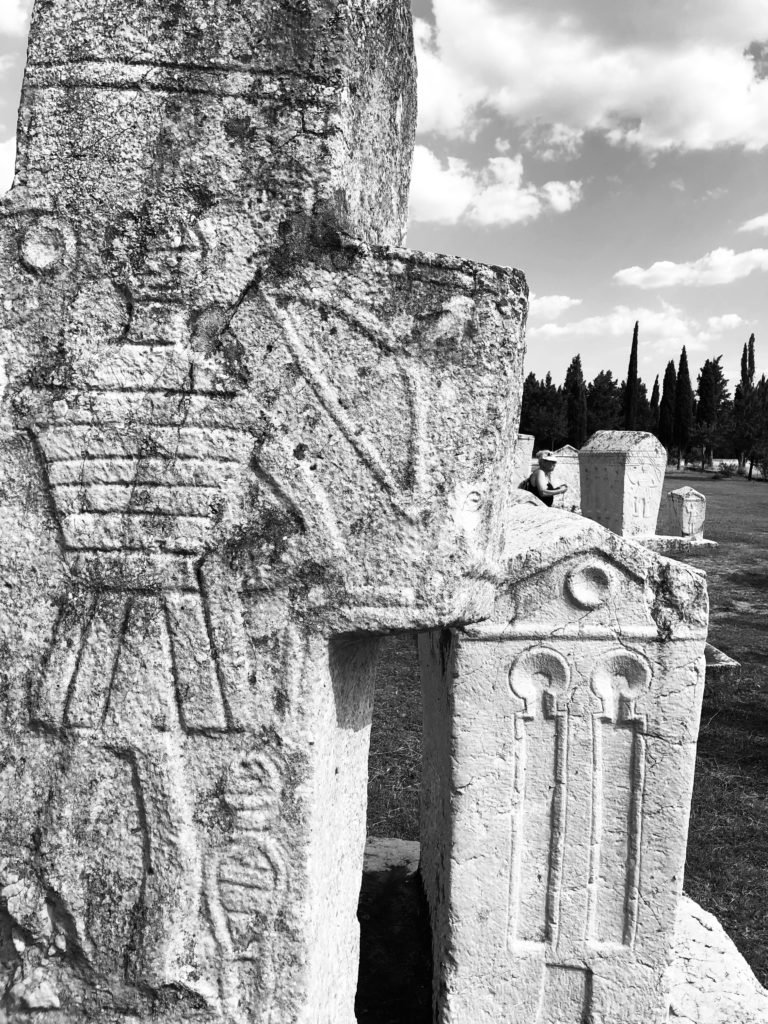
Stećak is the name for monumental medieval tombstones dating from 14th-16th centuries found scattered all across B&H, and borderlands of Croatia, Montenegro and Serbia. Radimlja is one of the biggest collections. The stećak are on the UNESCO world heritage list.

The river that runs through the town of Stolac. What a fun road trip! Time to get back on the road and head to the capital.
Sarajevo…here we come!


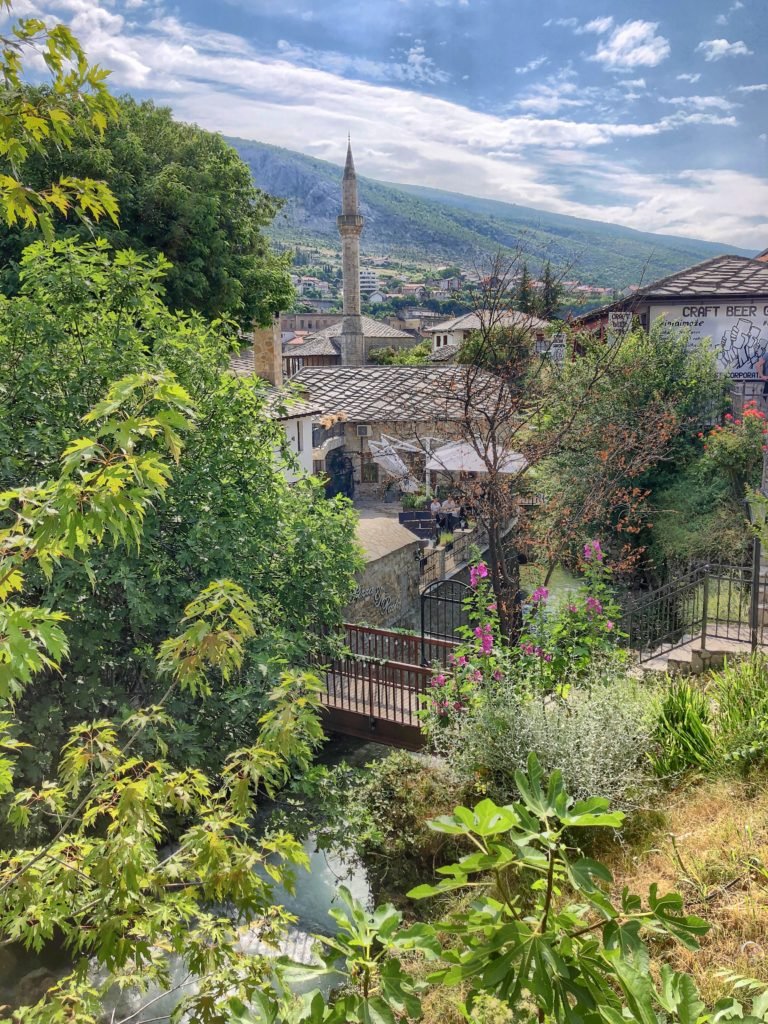
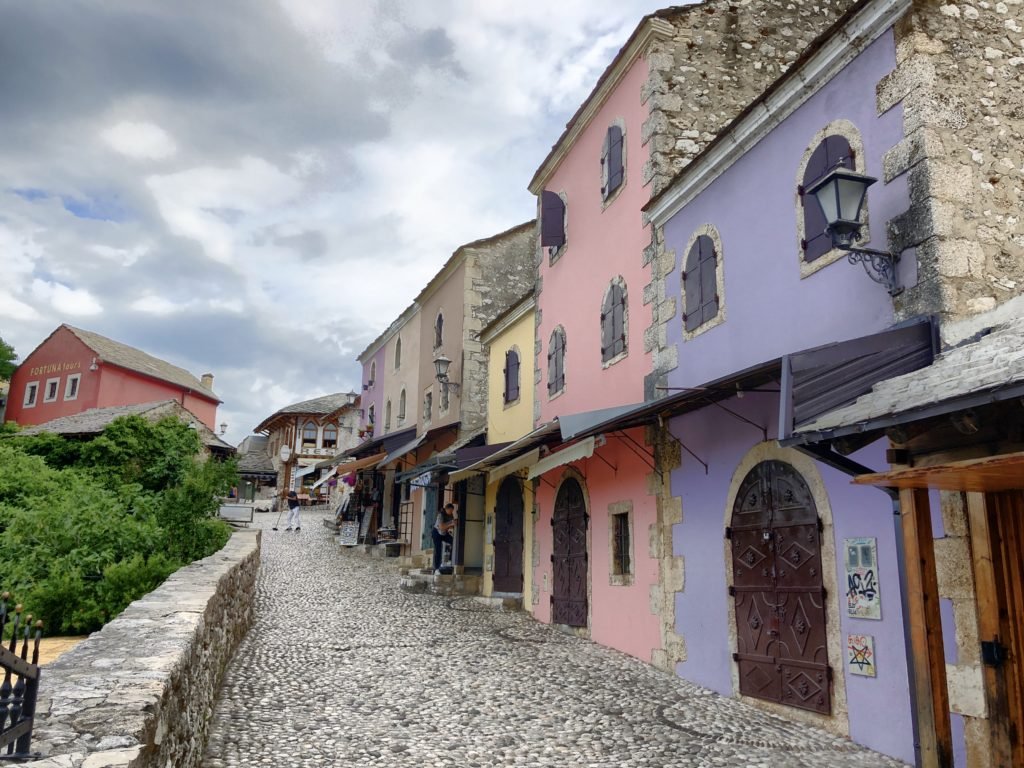
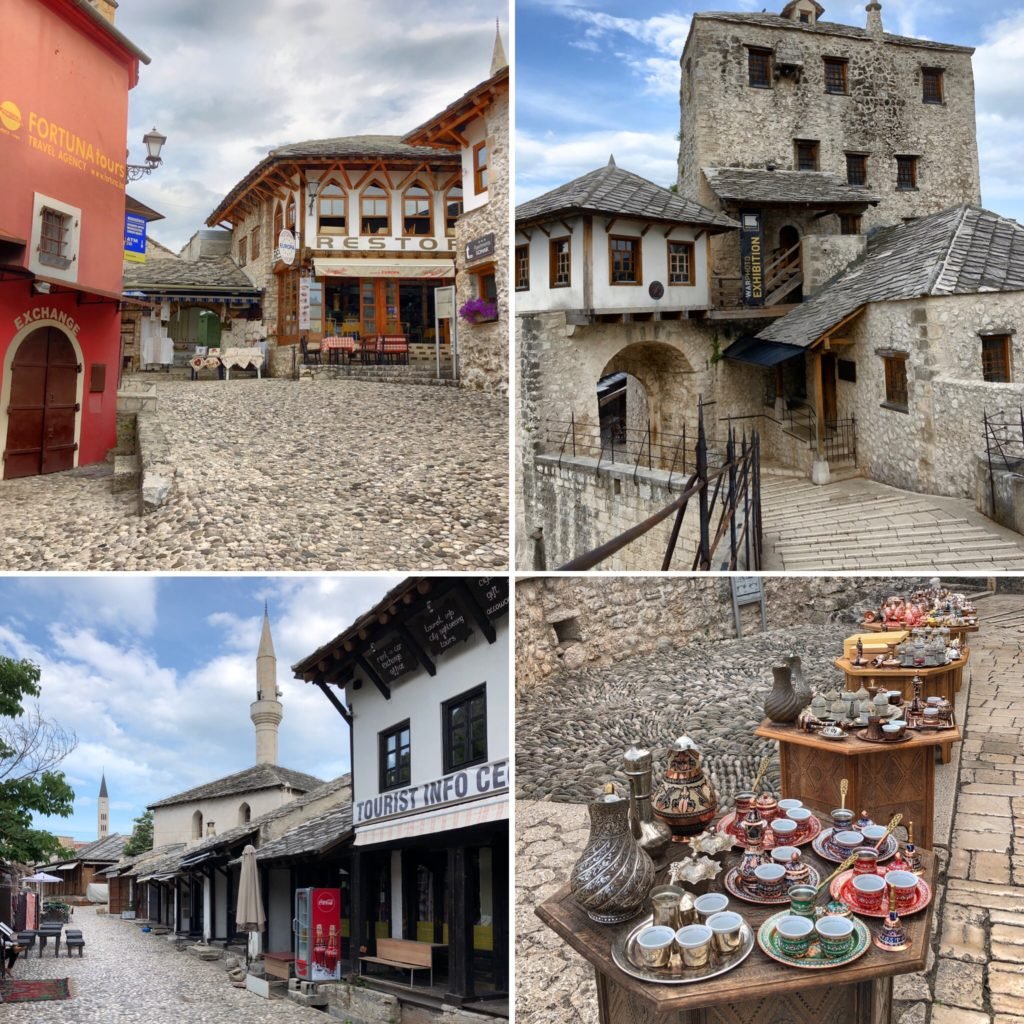
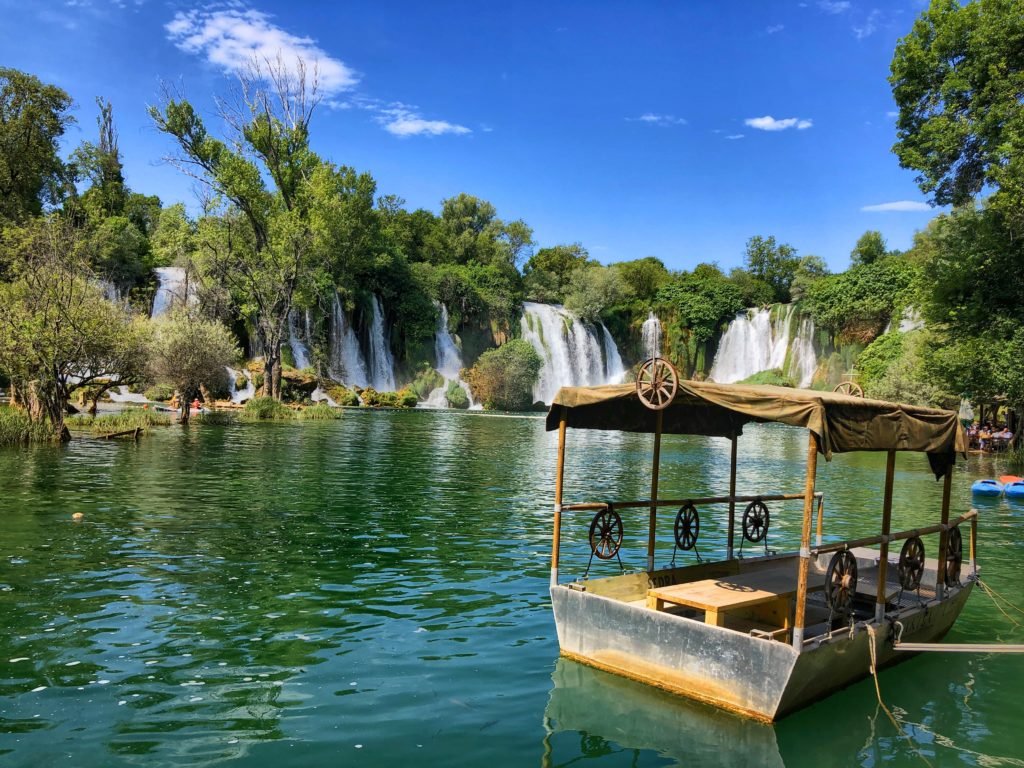

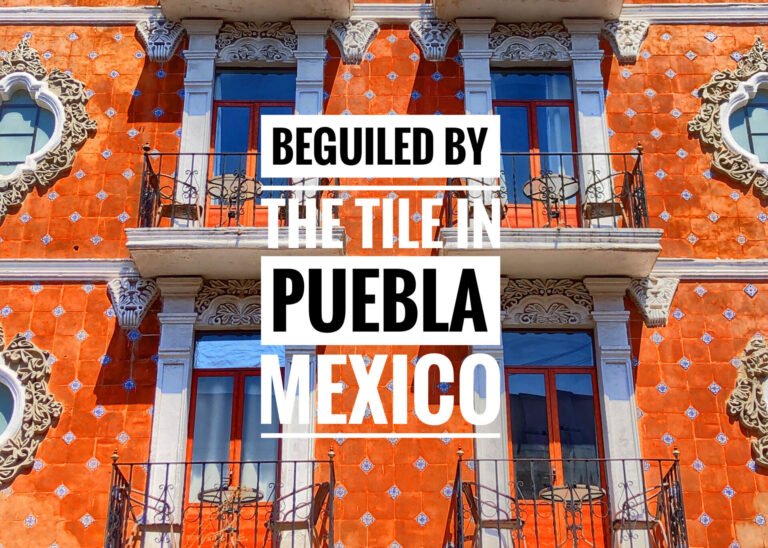
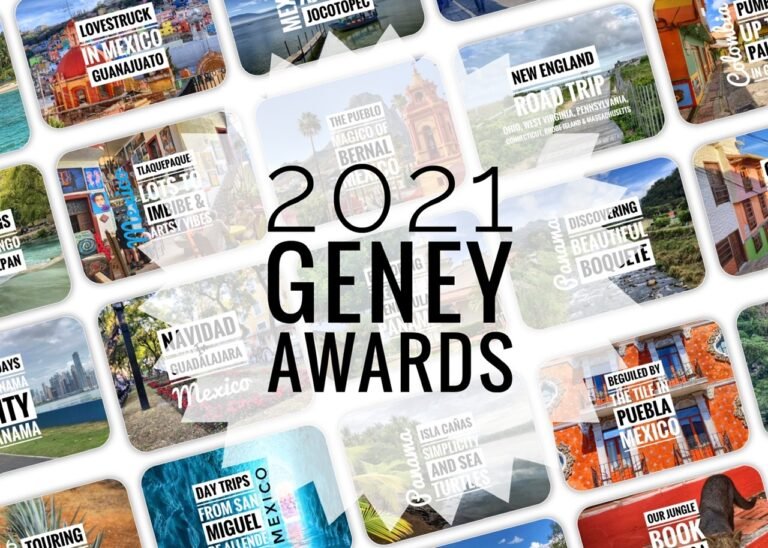
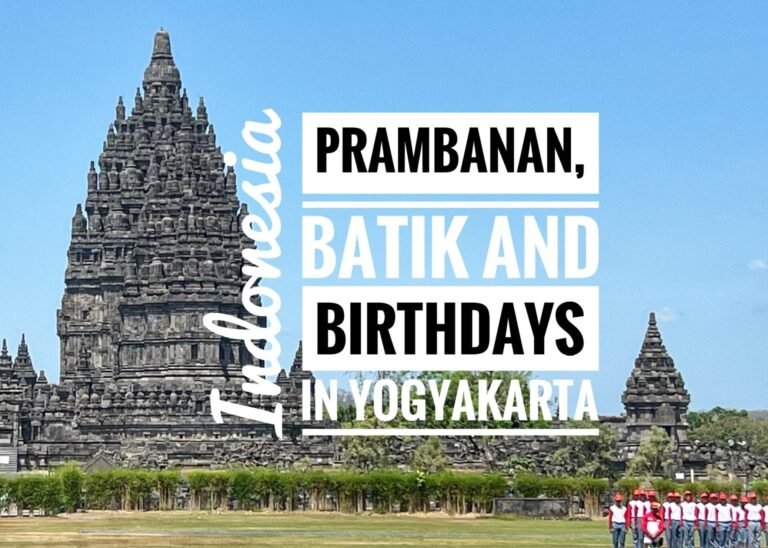
Your adventures are wonderful! The fact that you can fill it with history is captivating!
Thank you so much Christina! What’s the point of traveling if you can’t learn a little along the way? 😉
Adding Bosnia to our list
Good choice. We could have spent a LOT longer there.